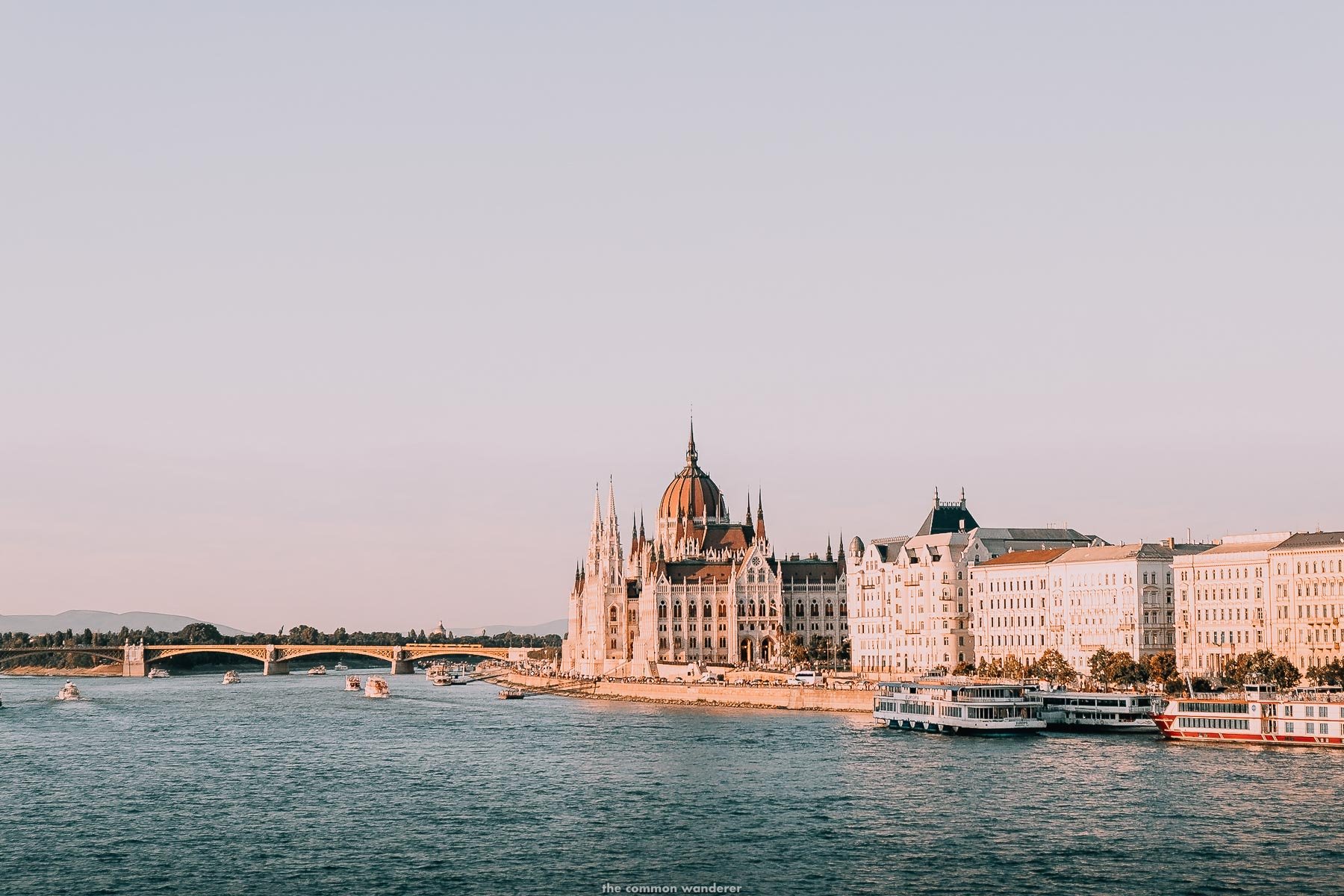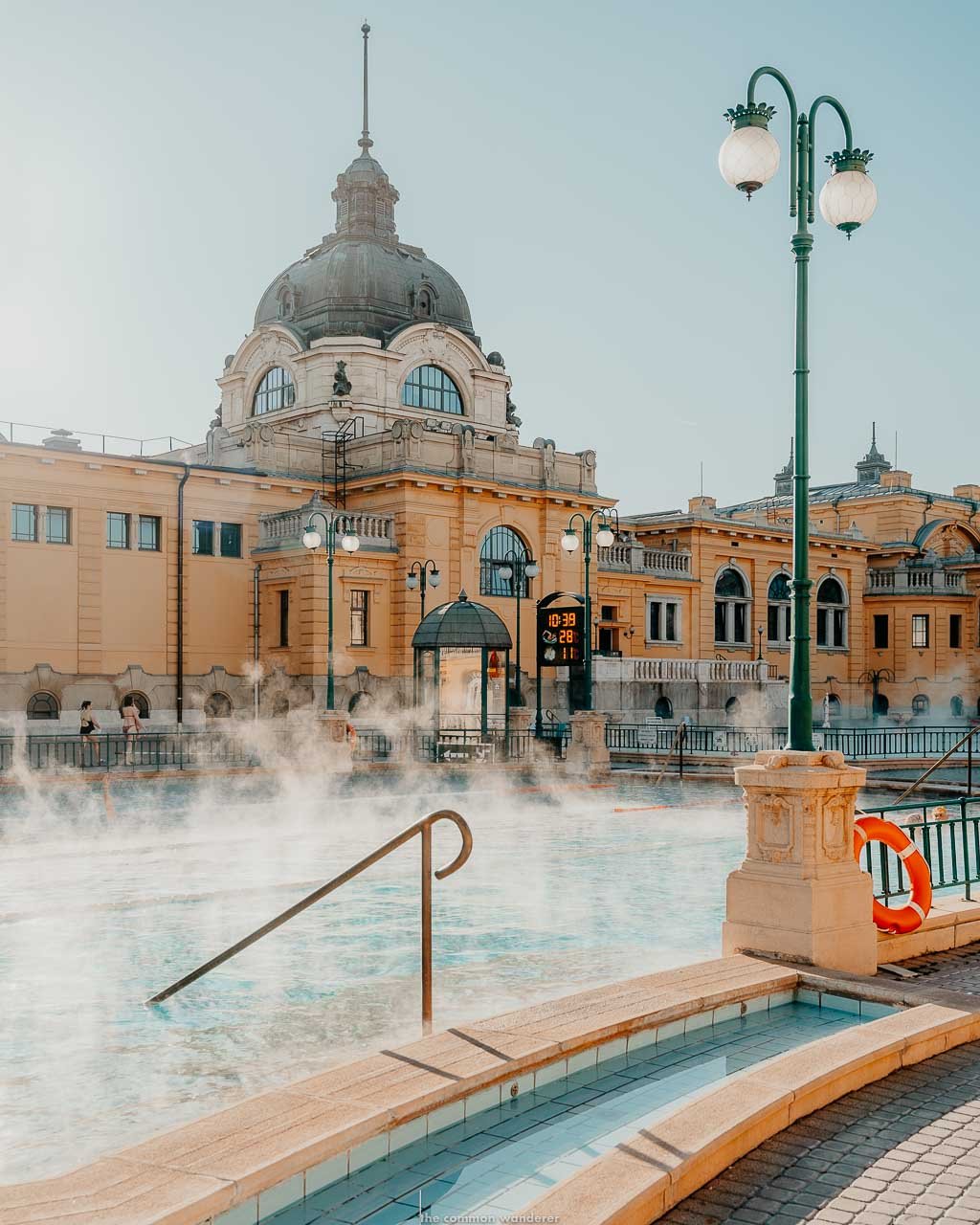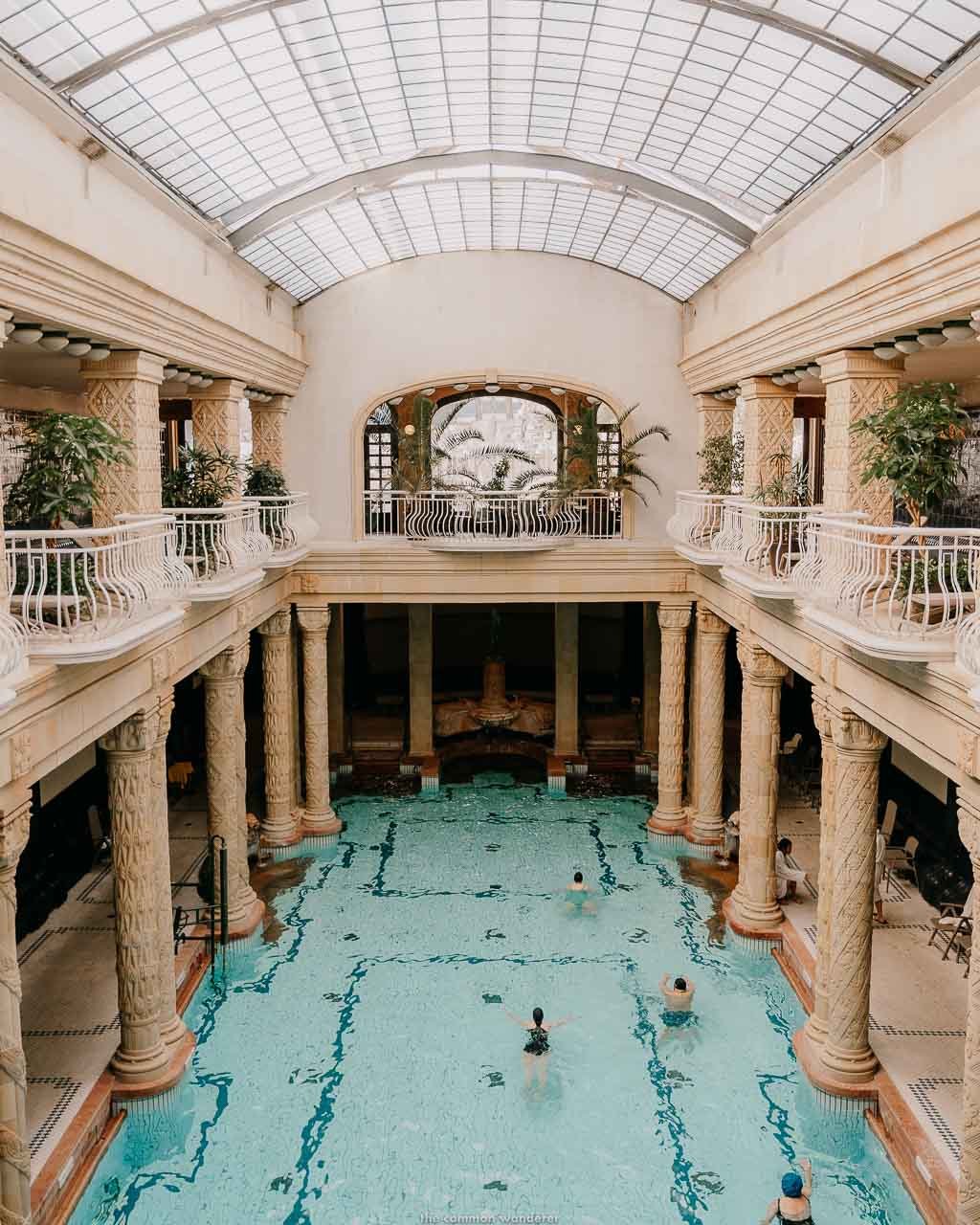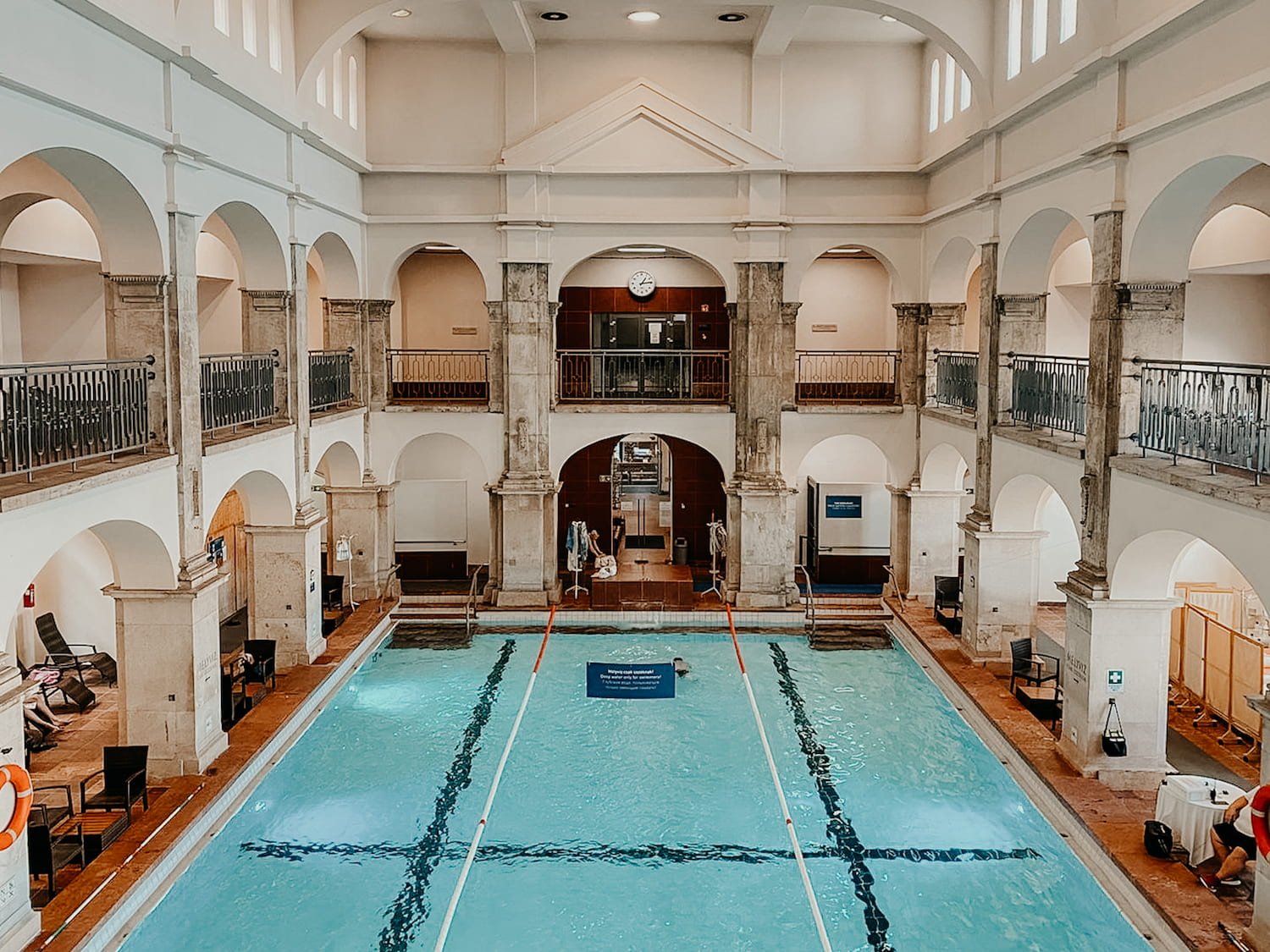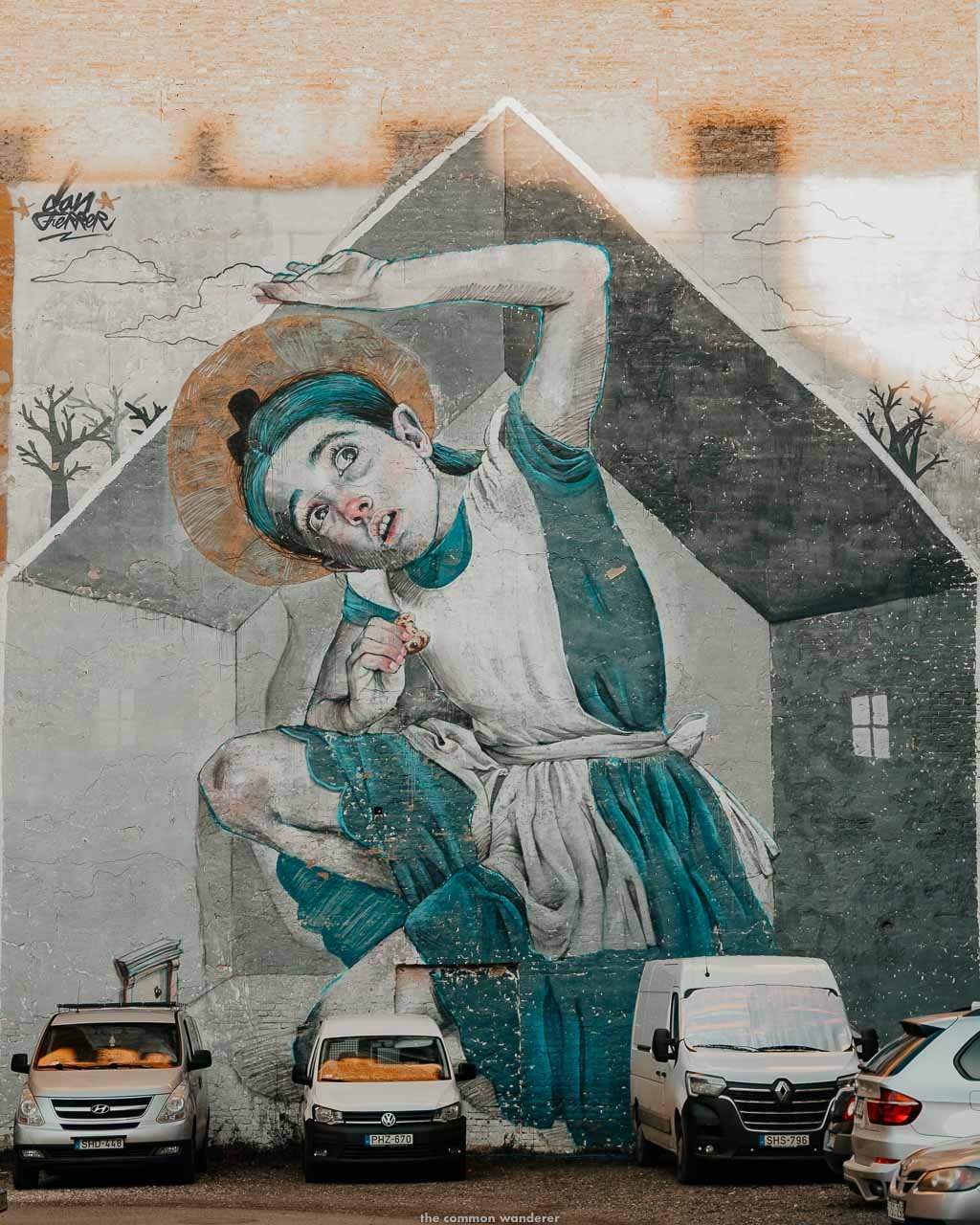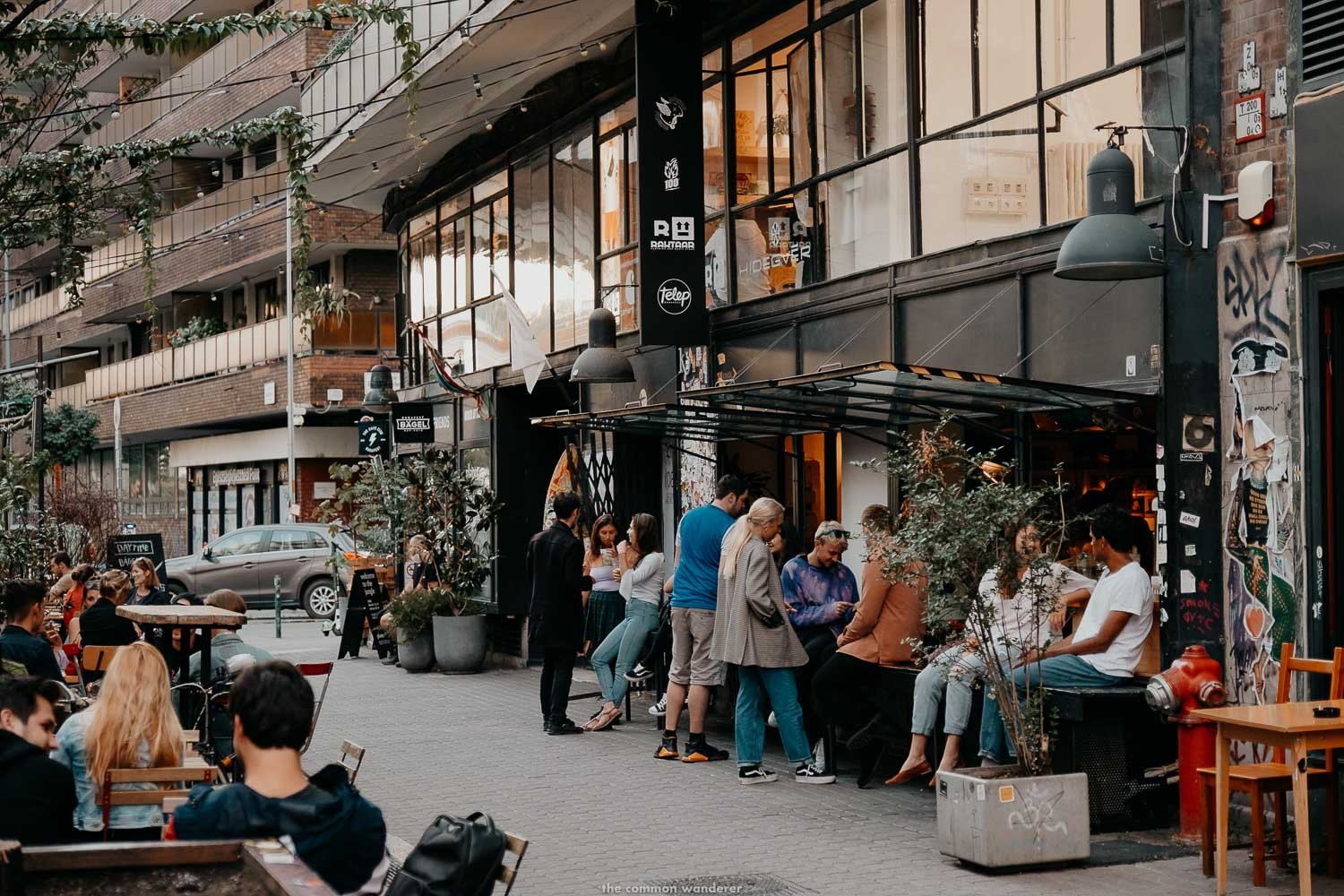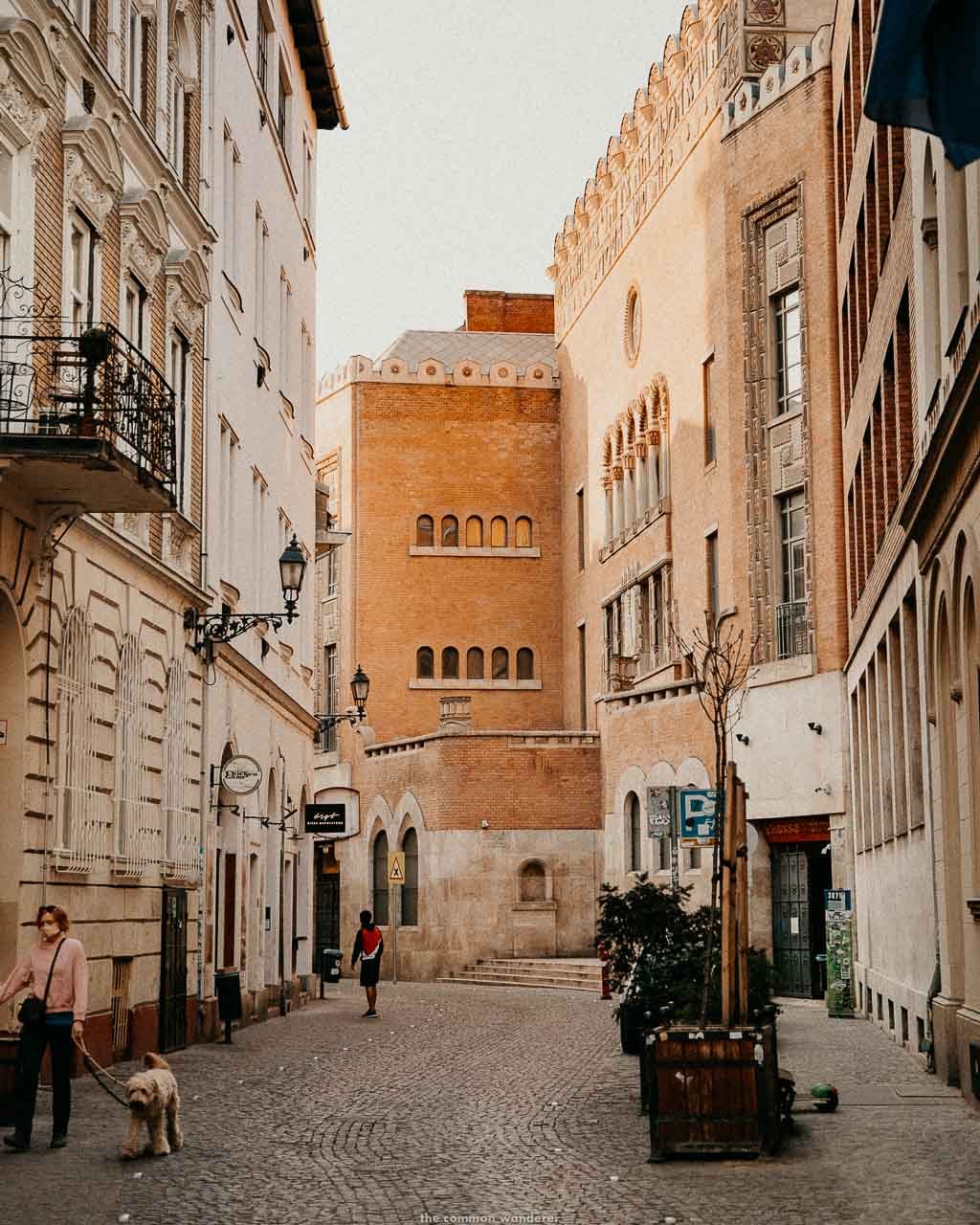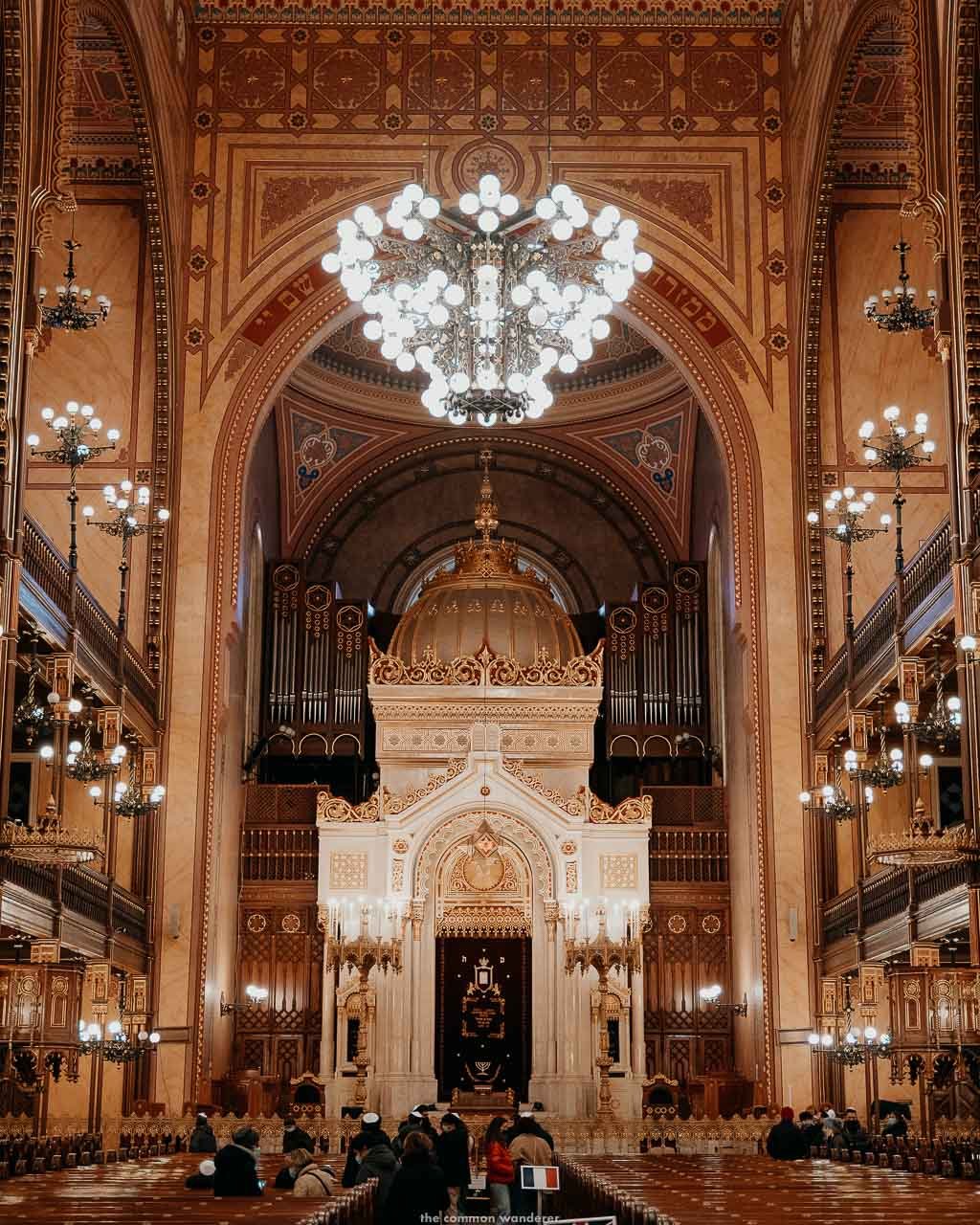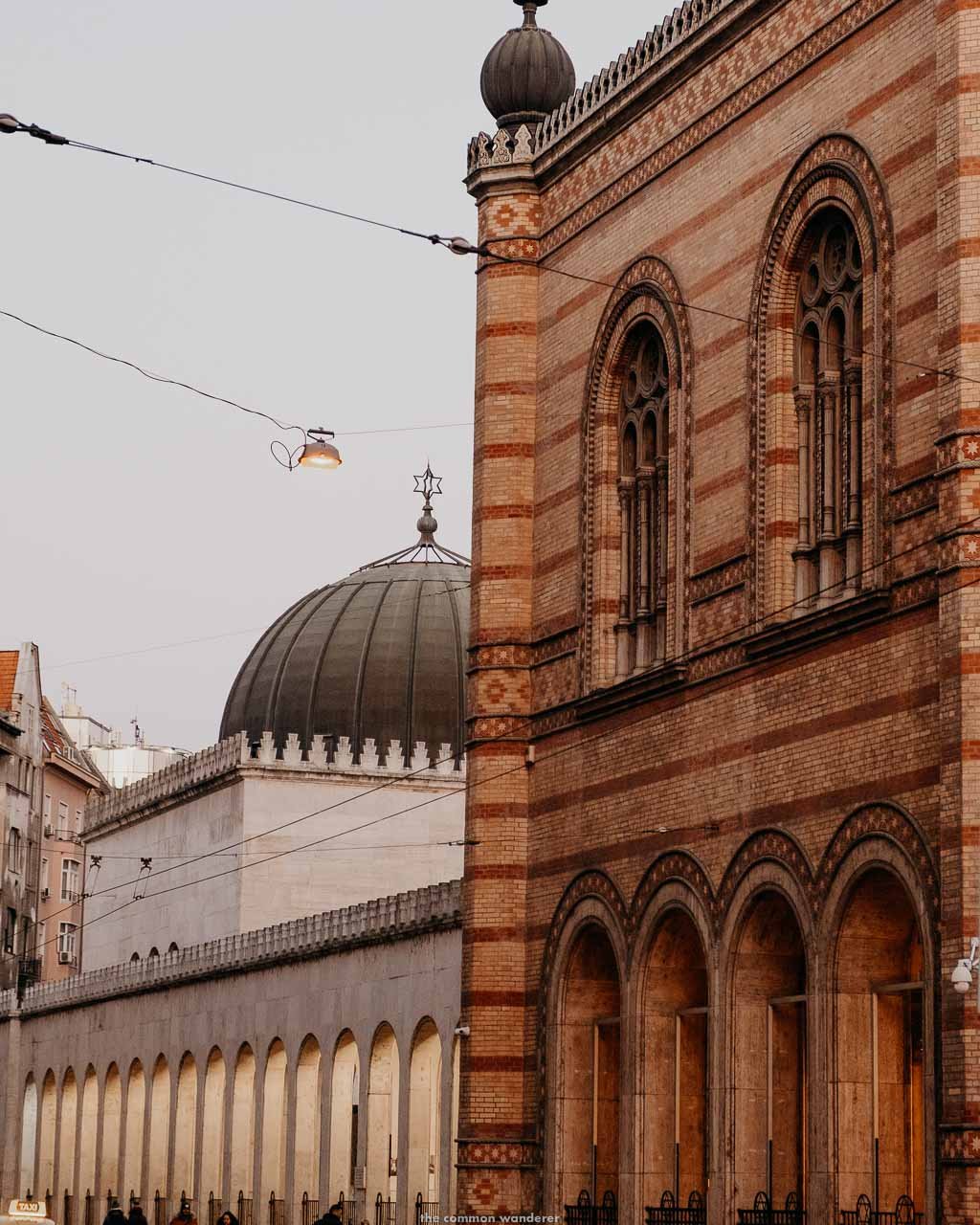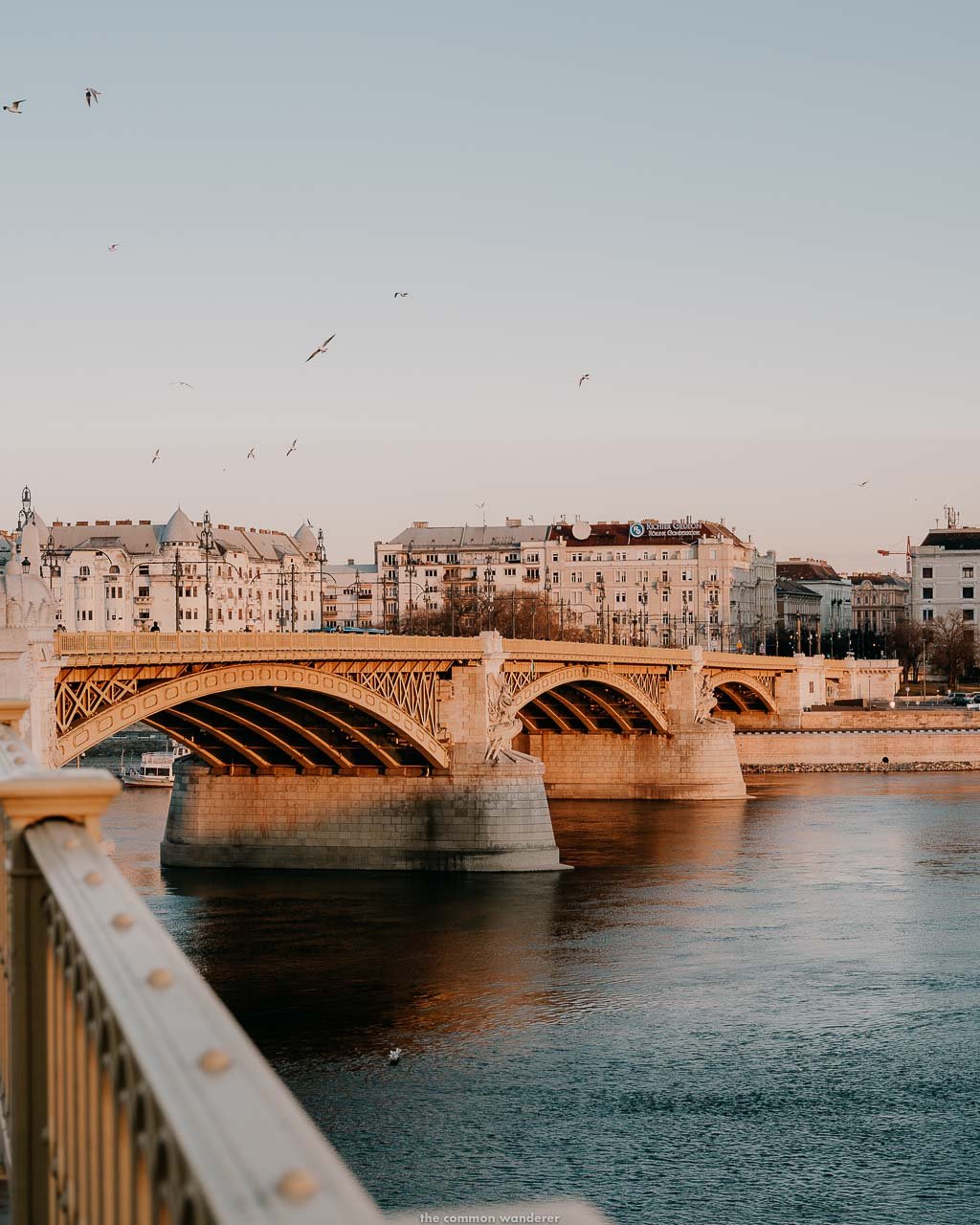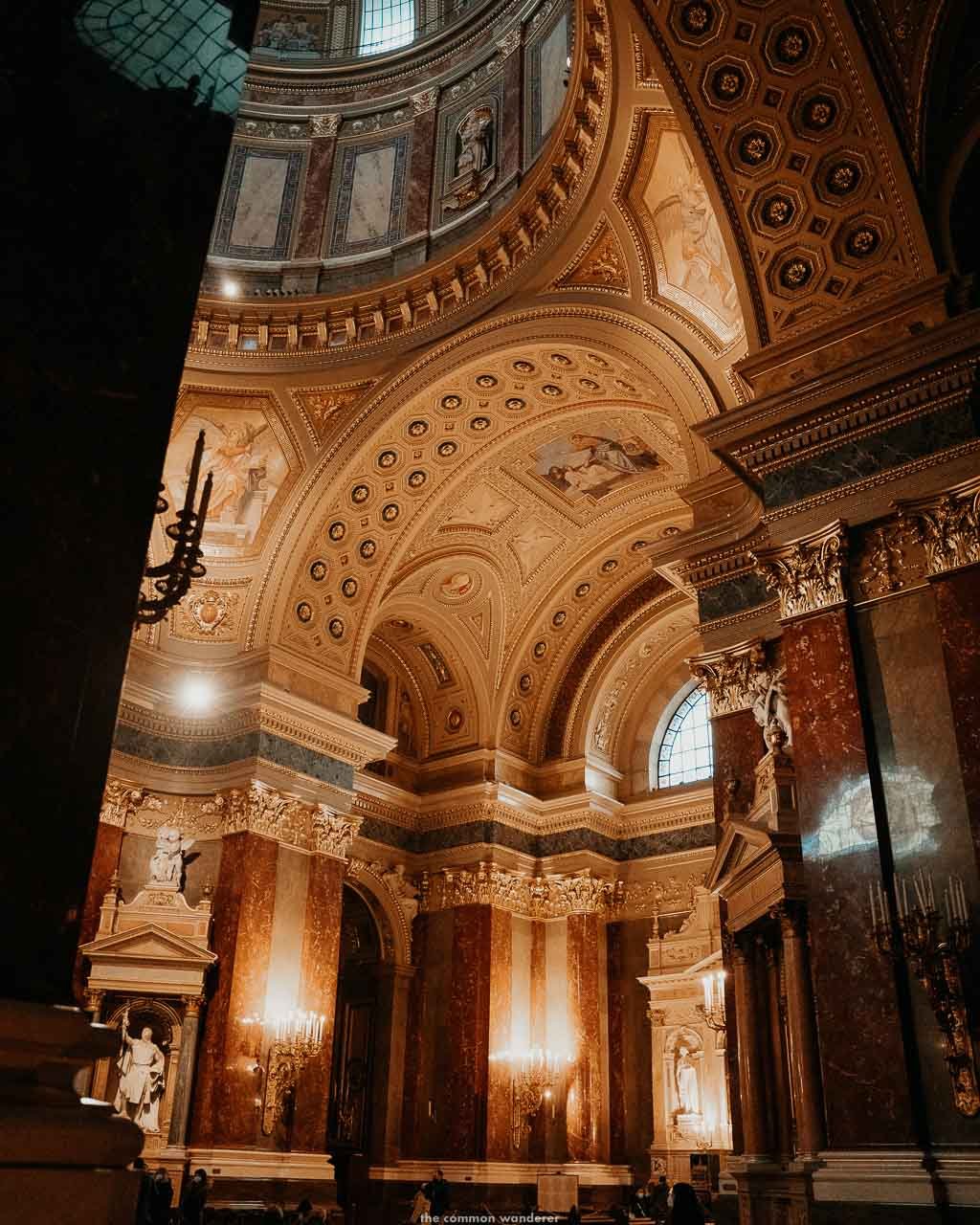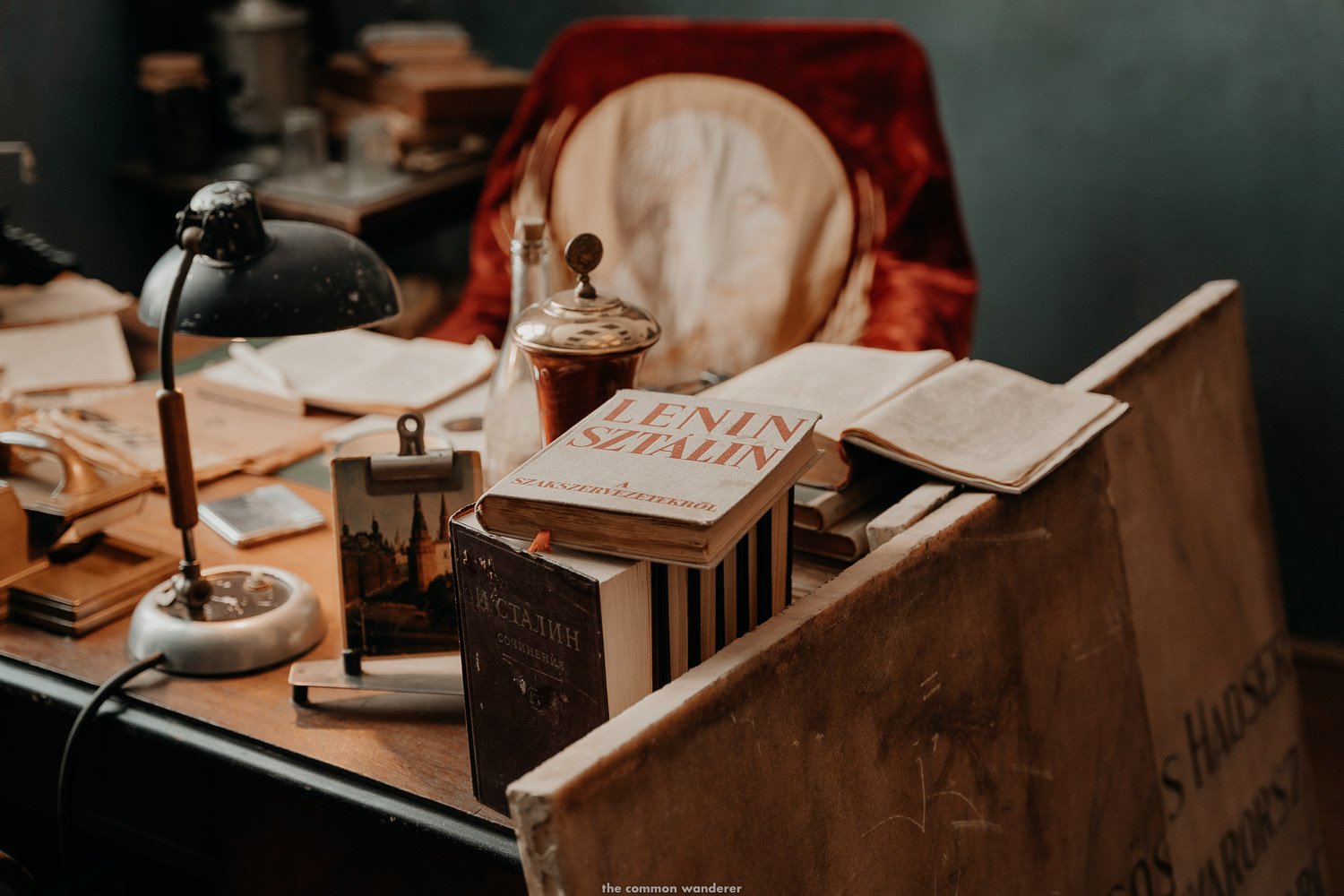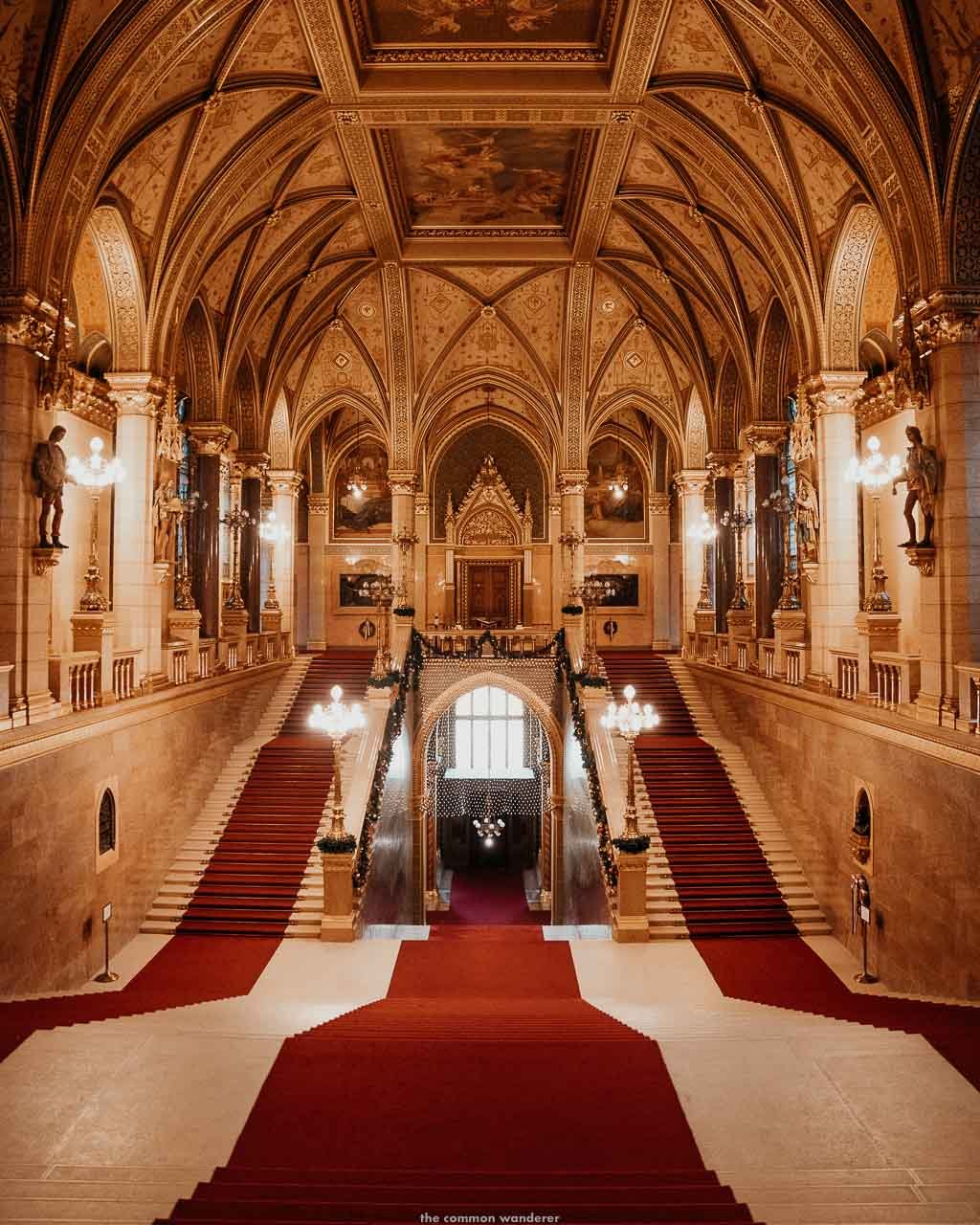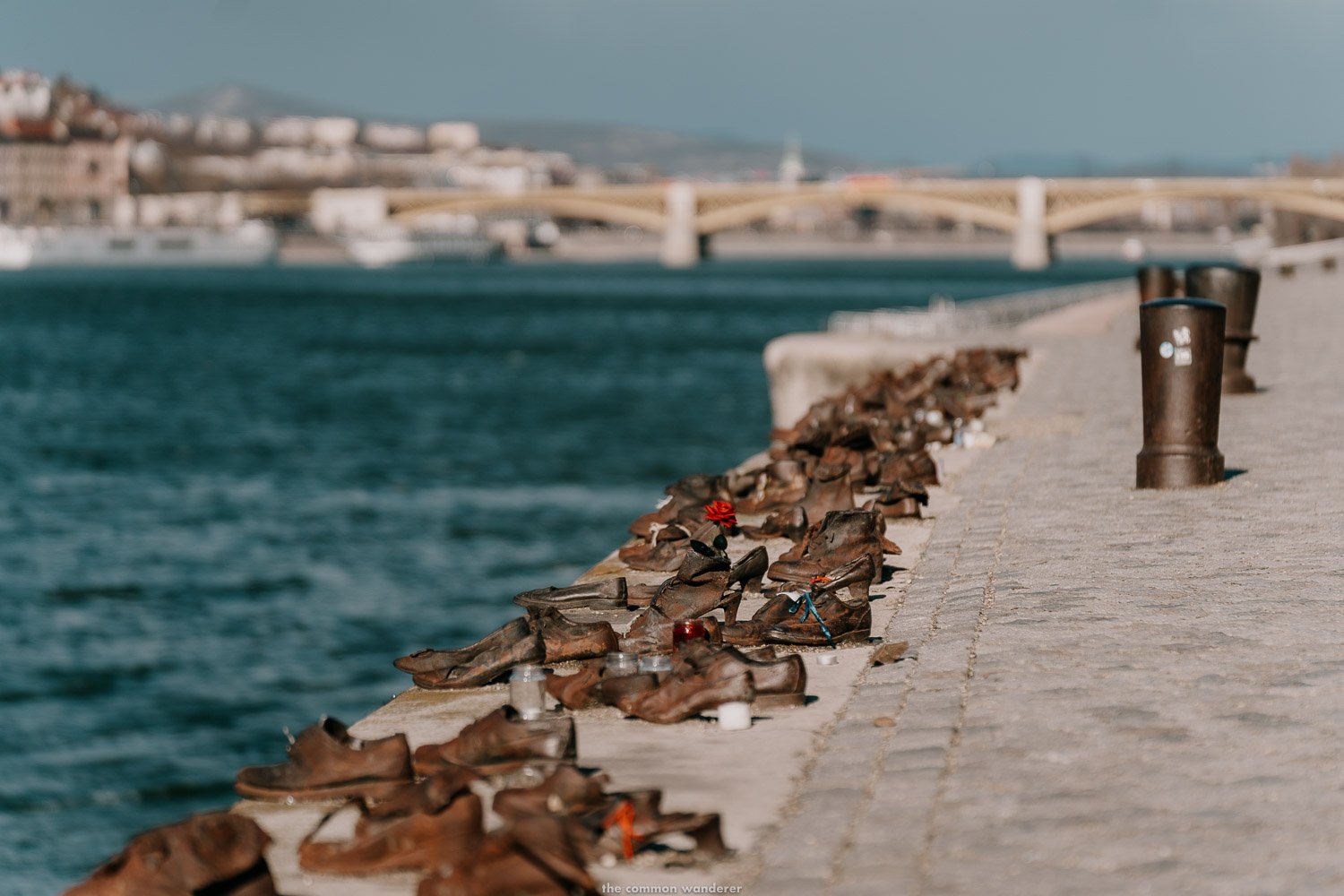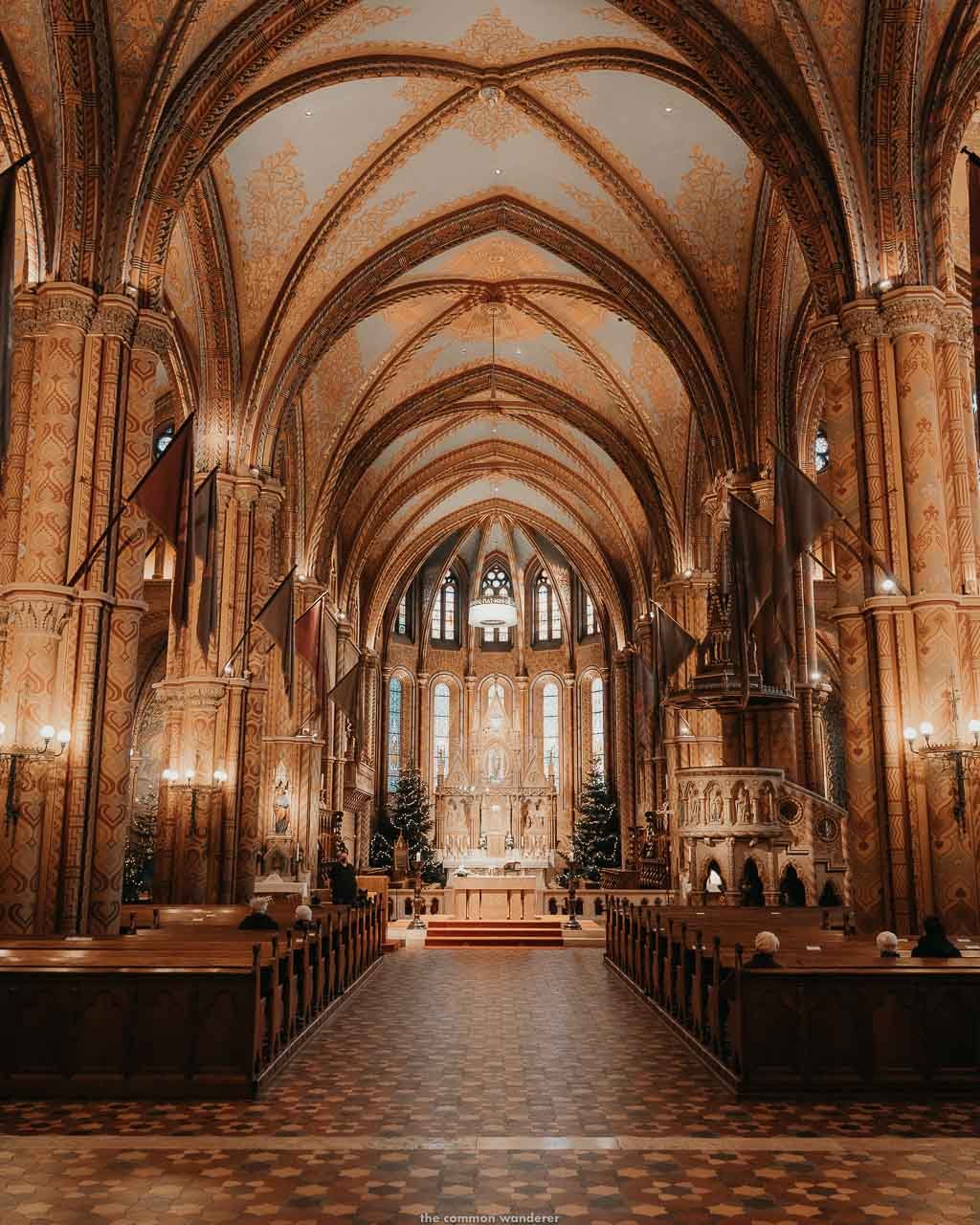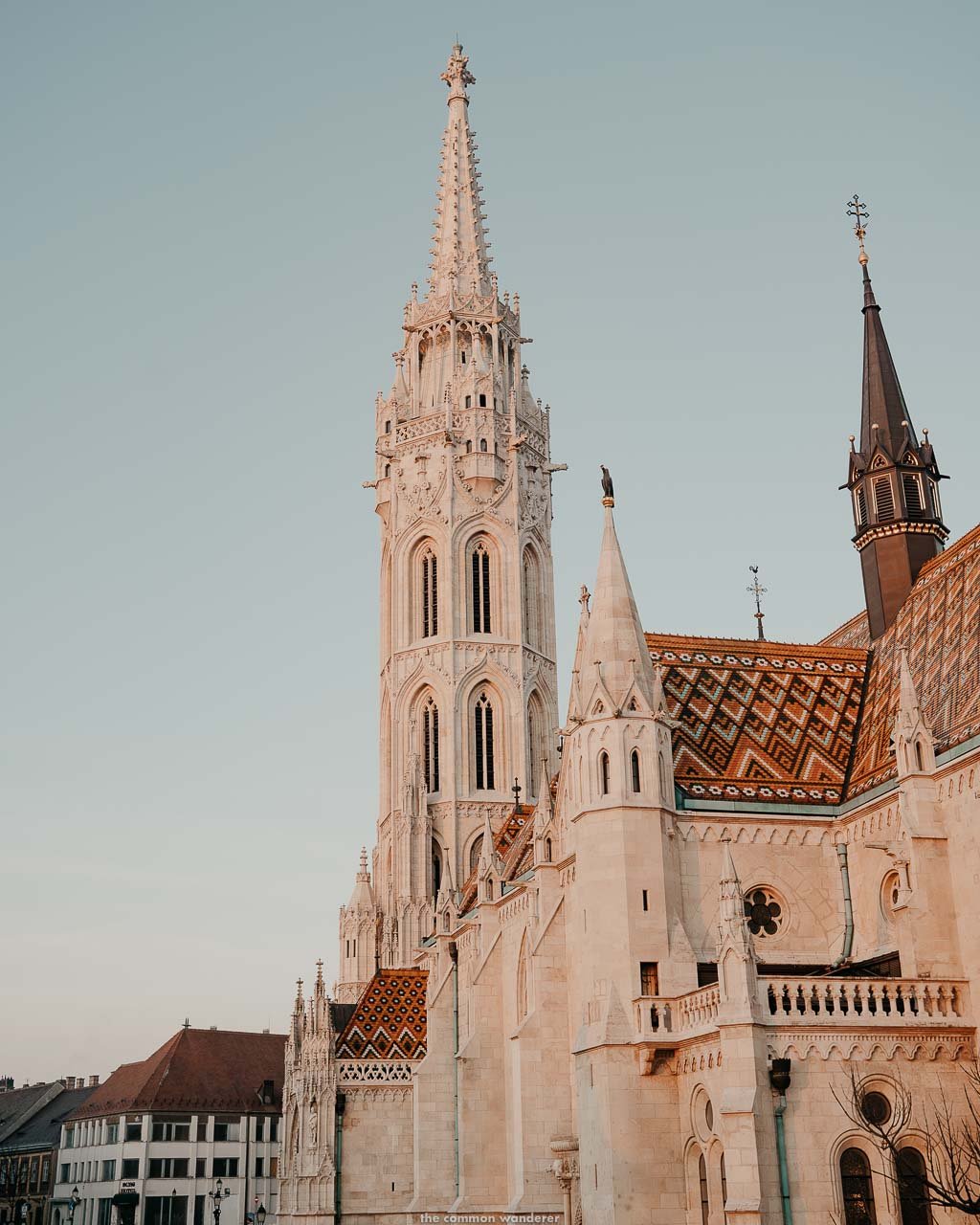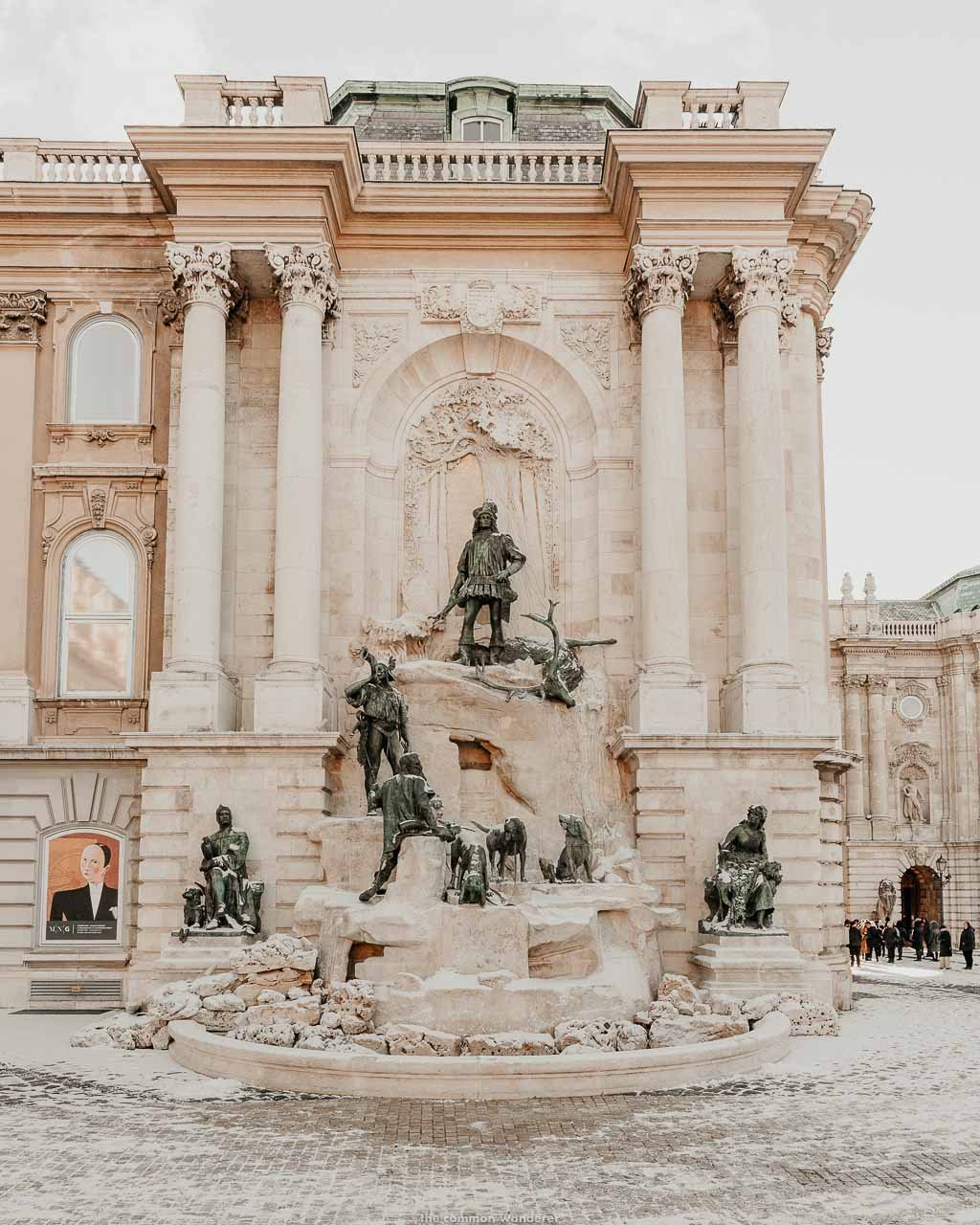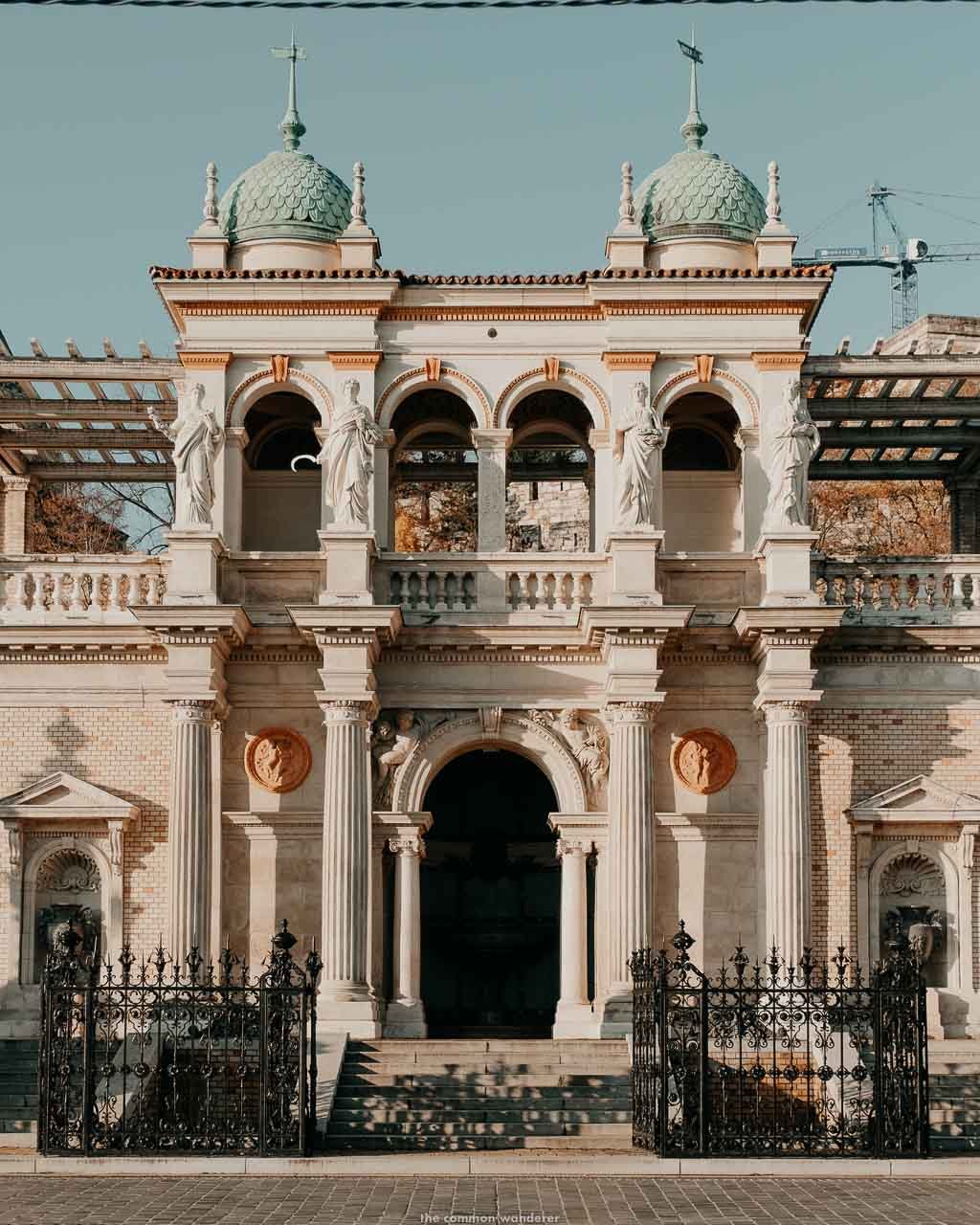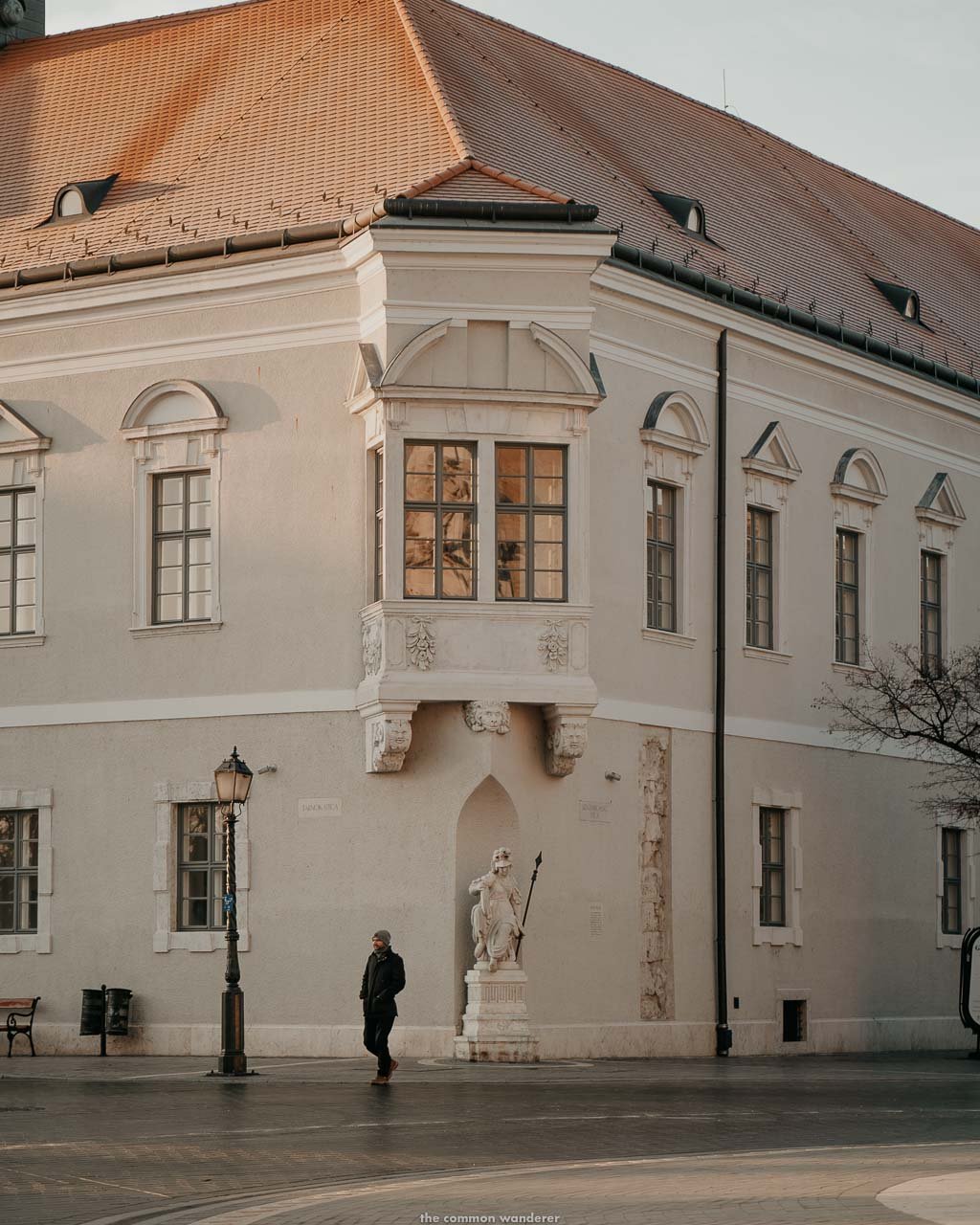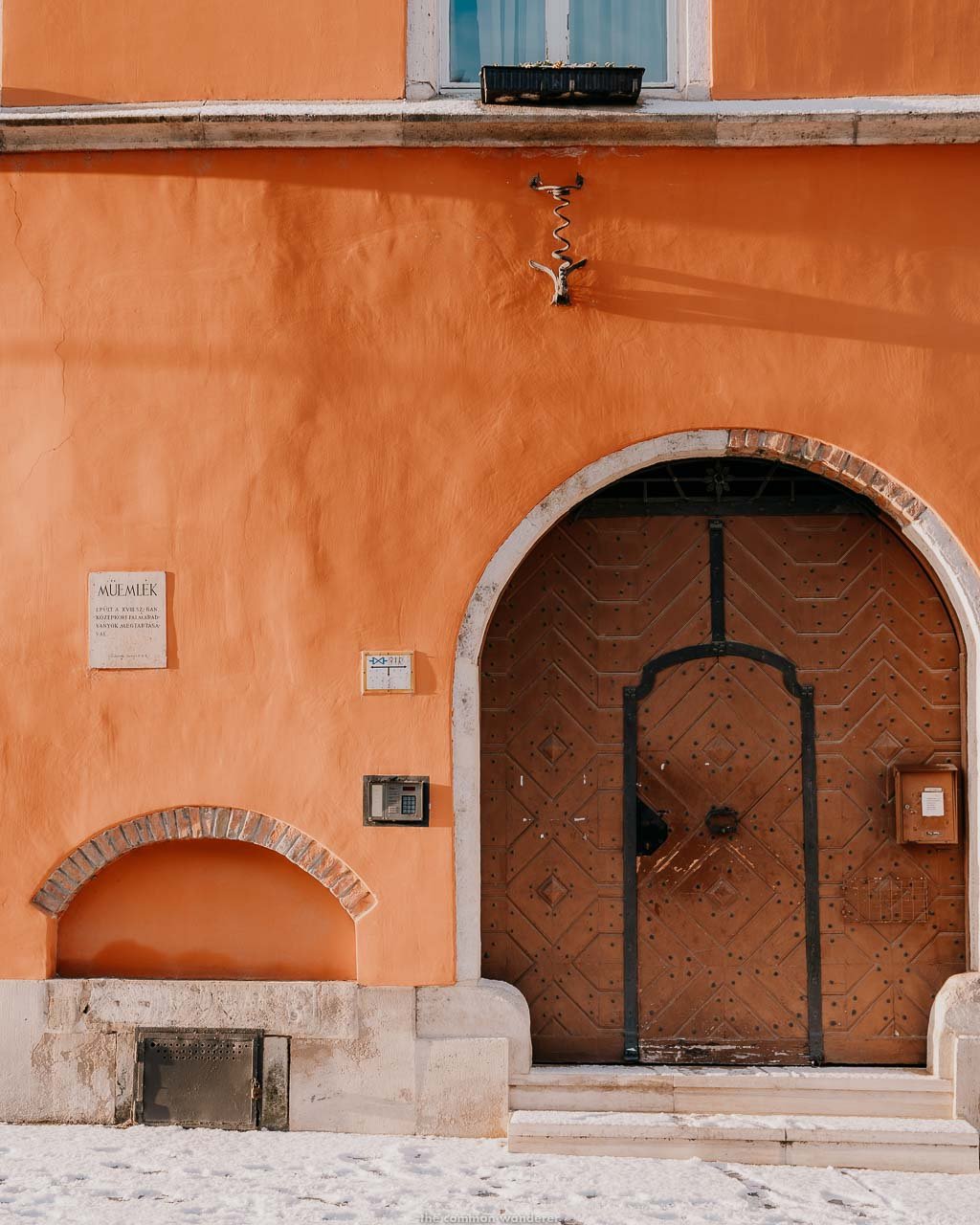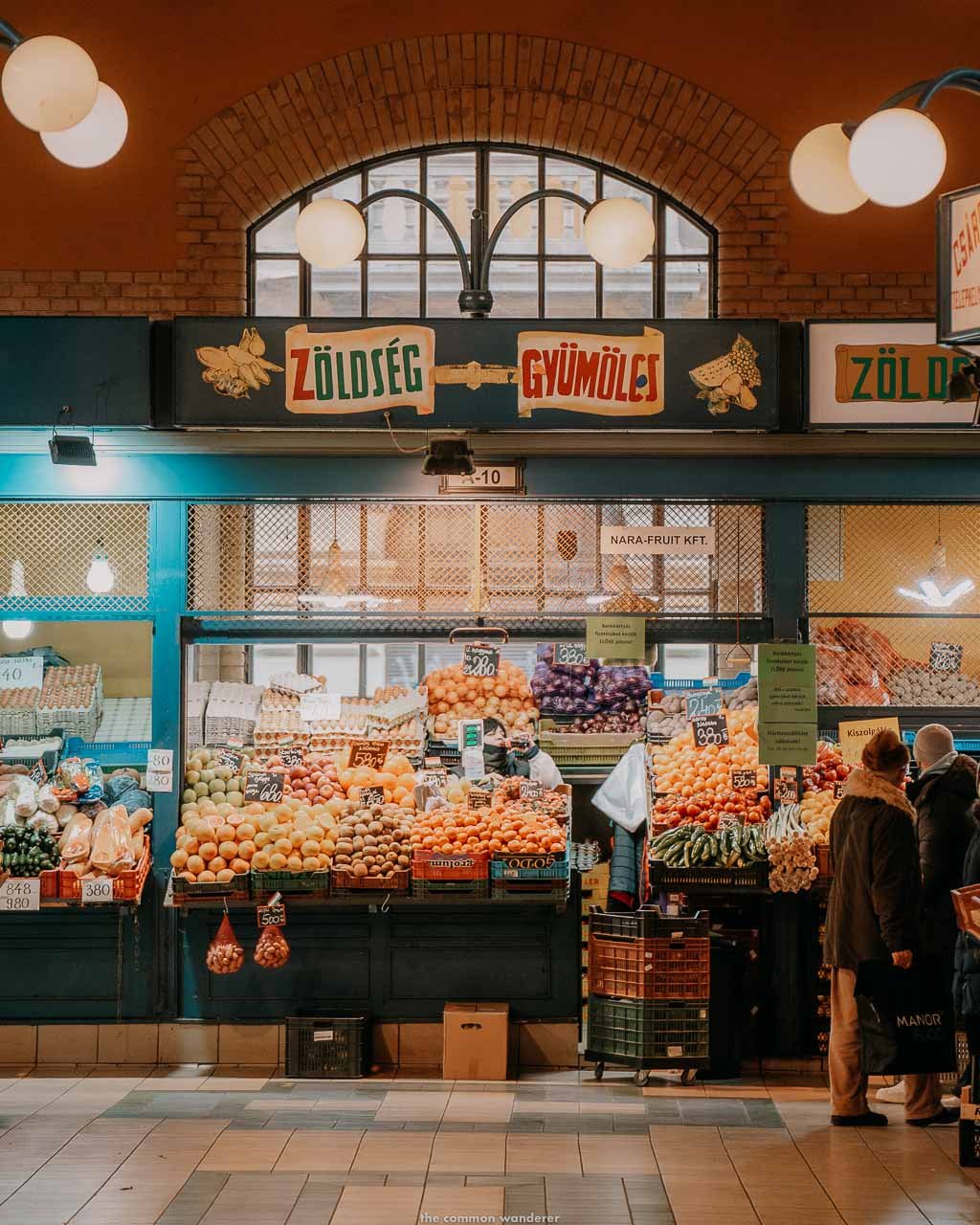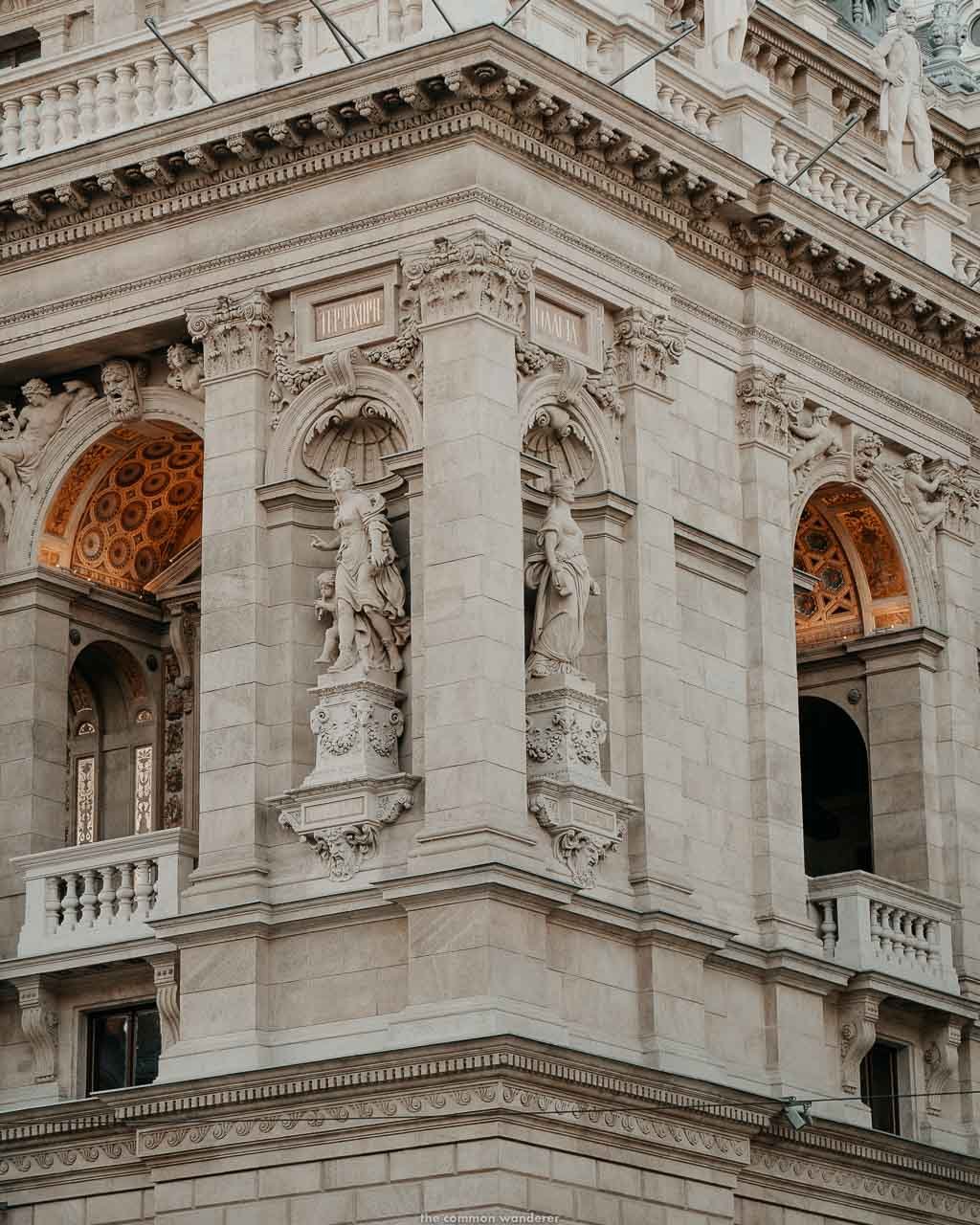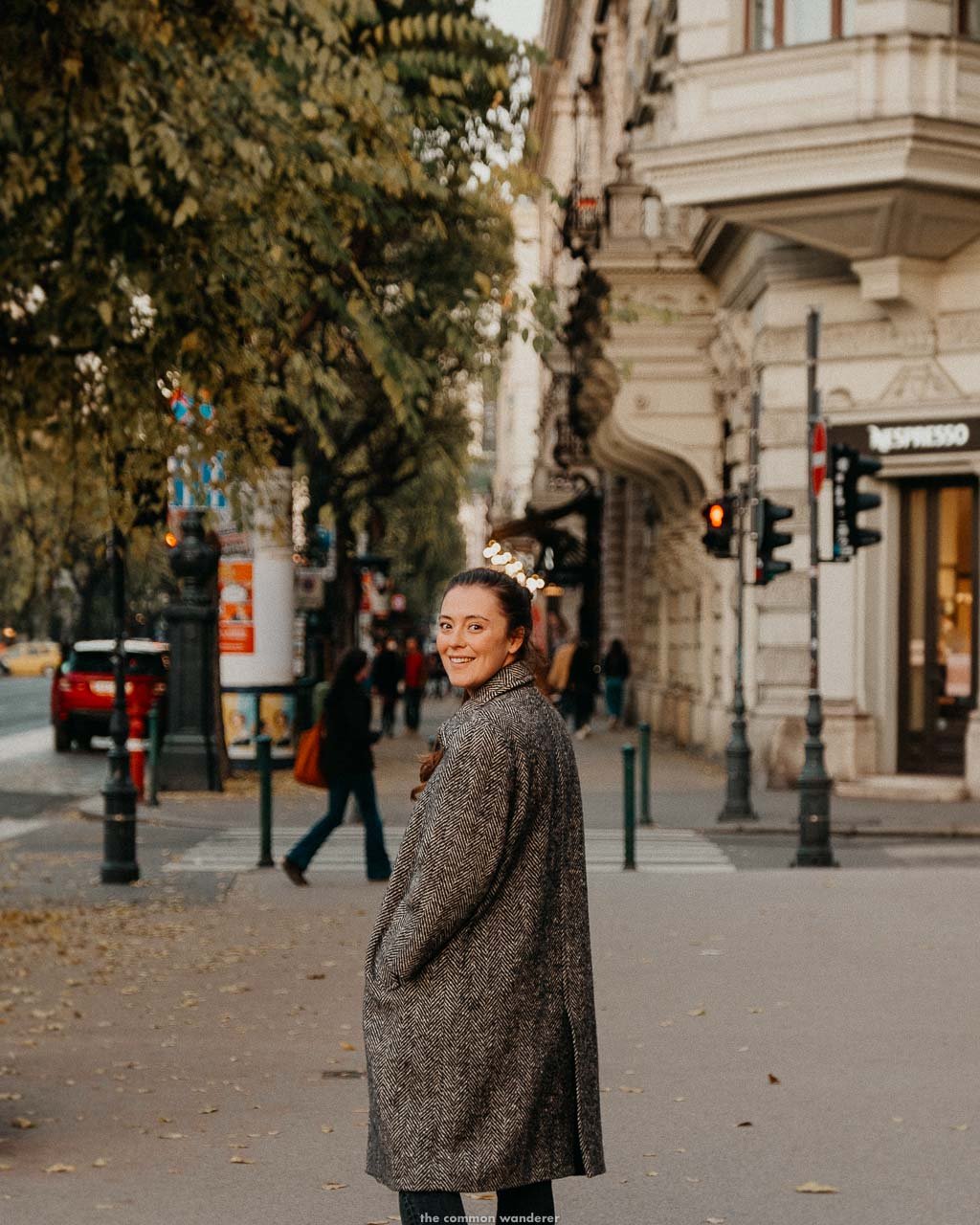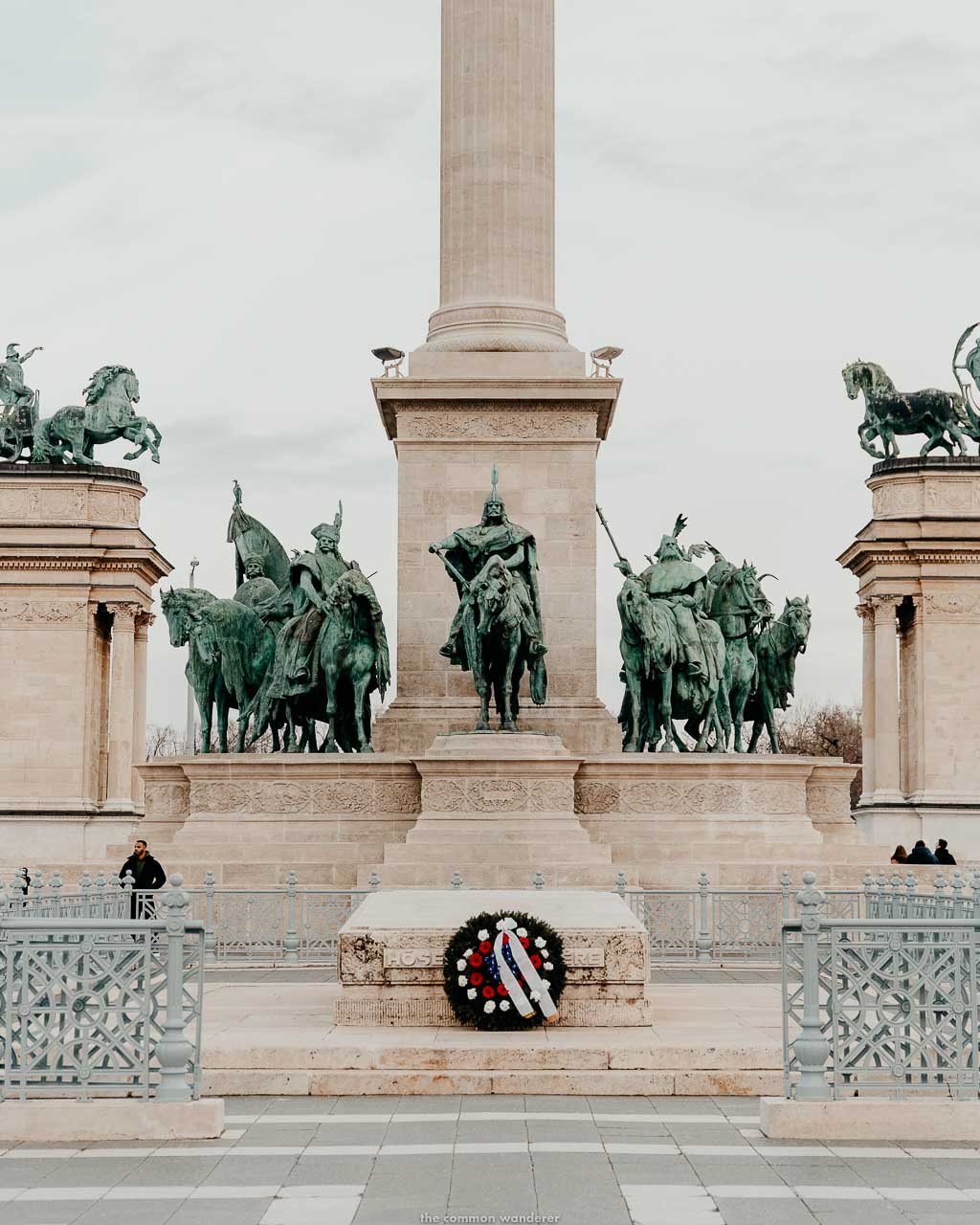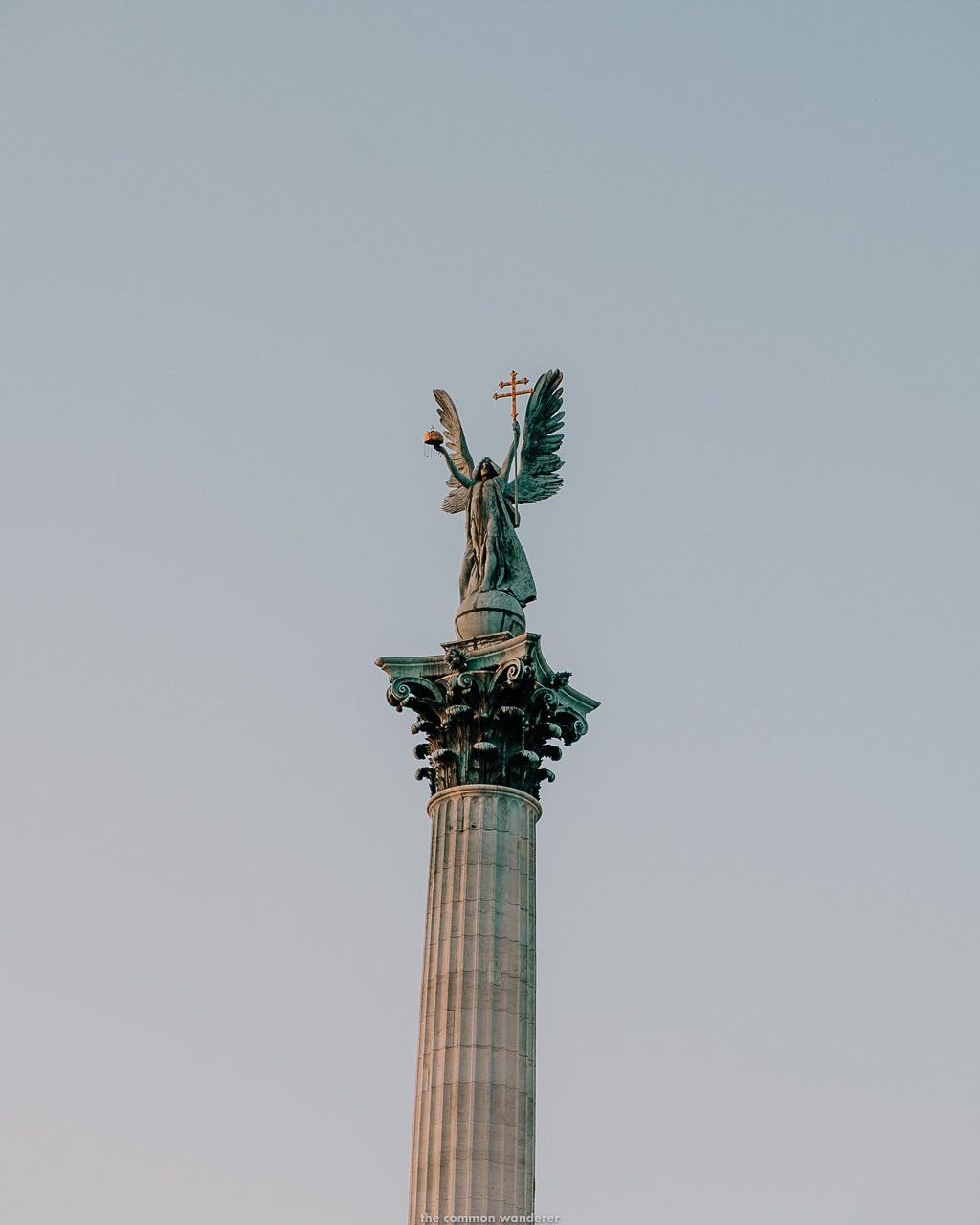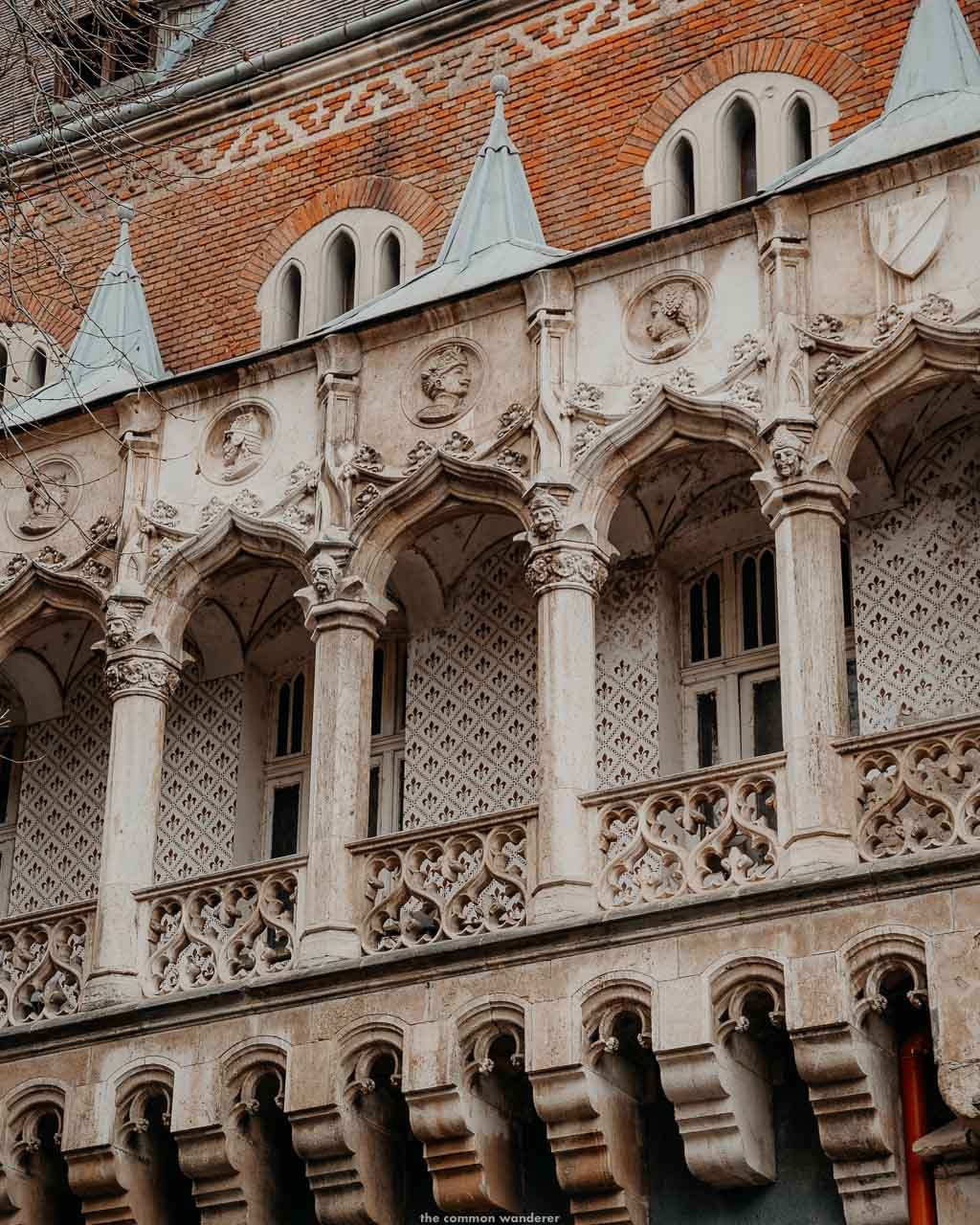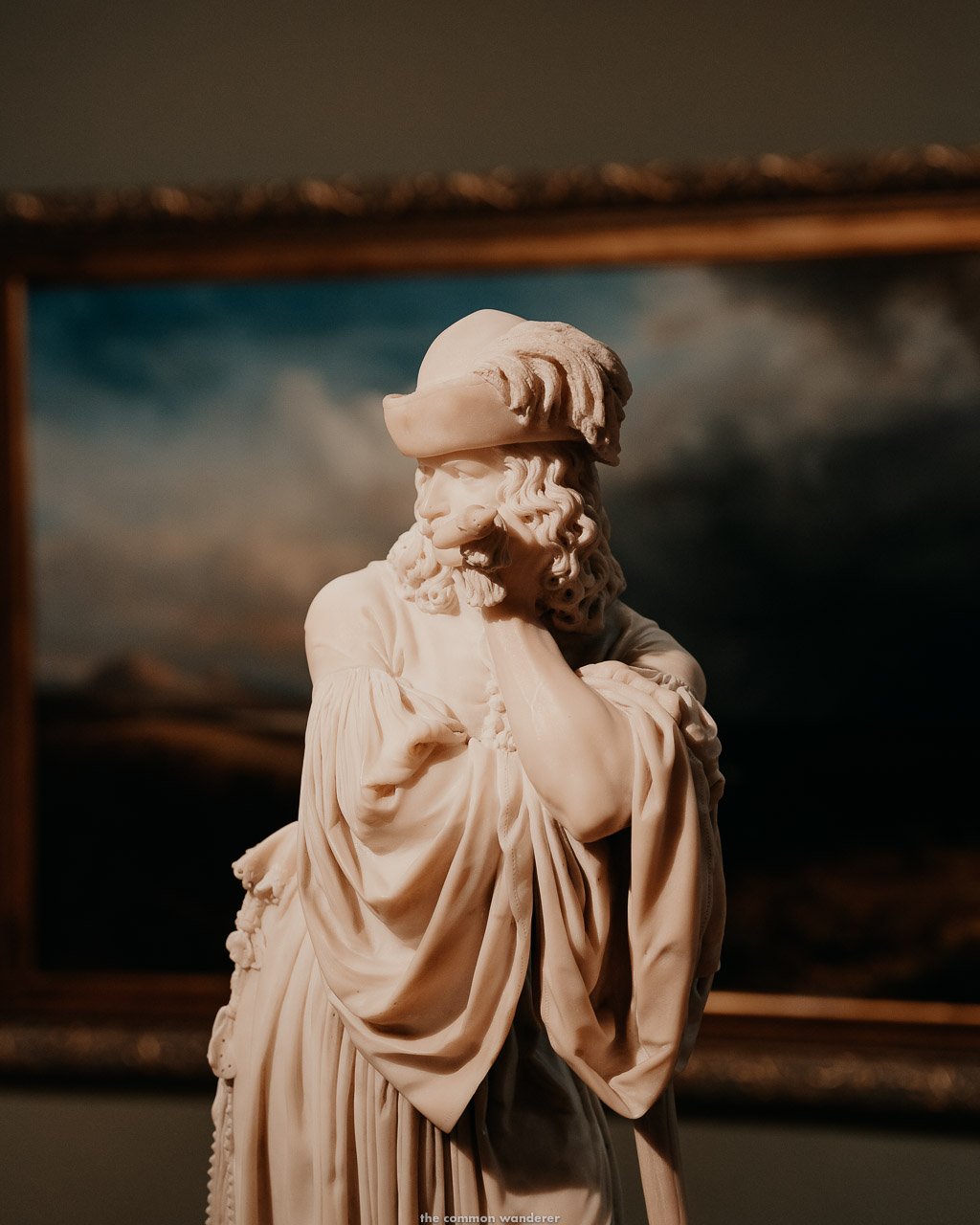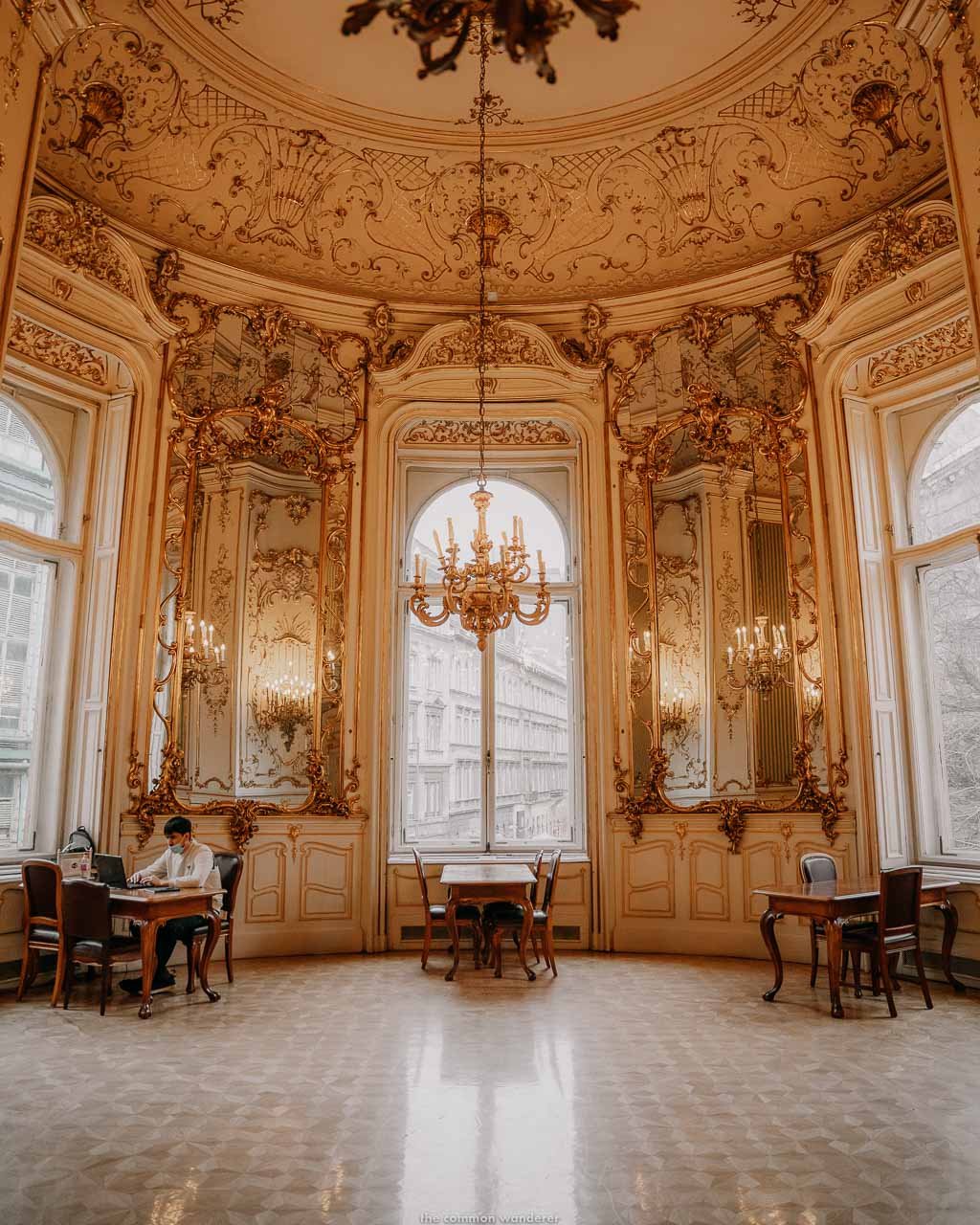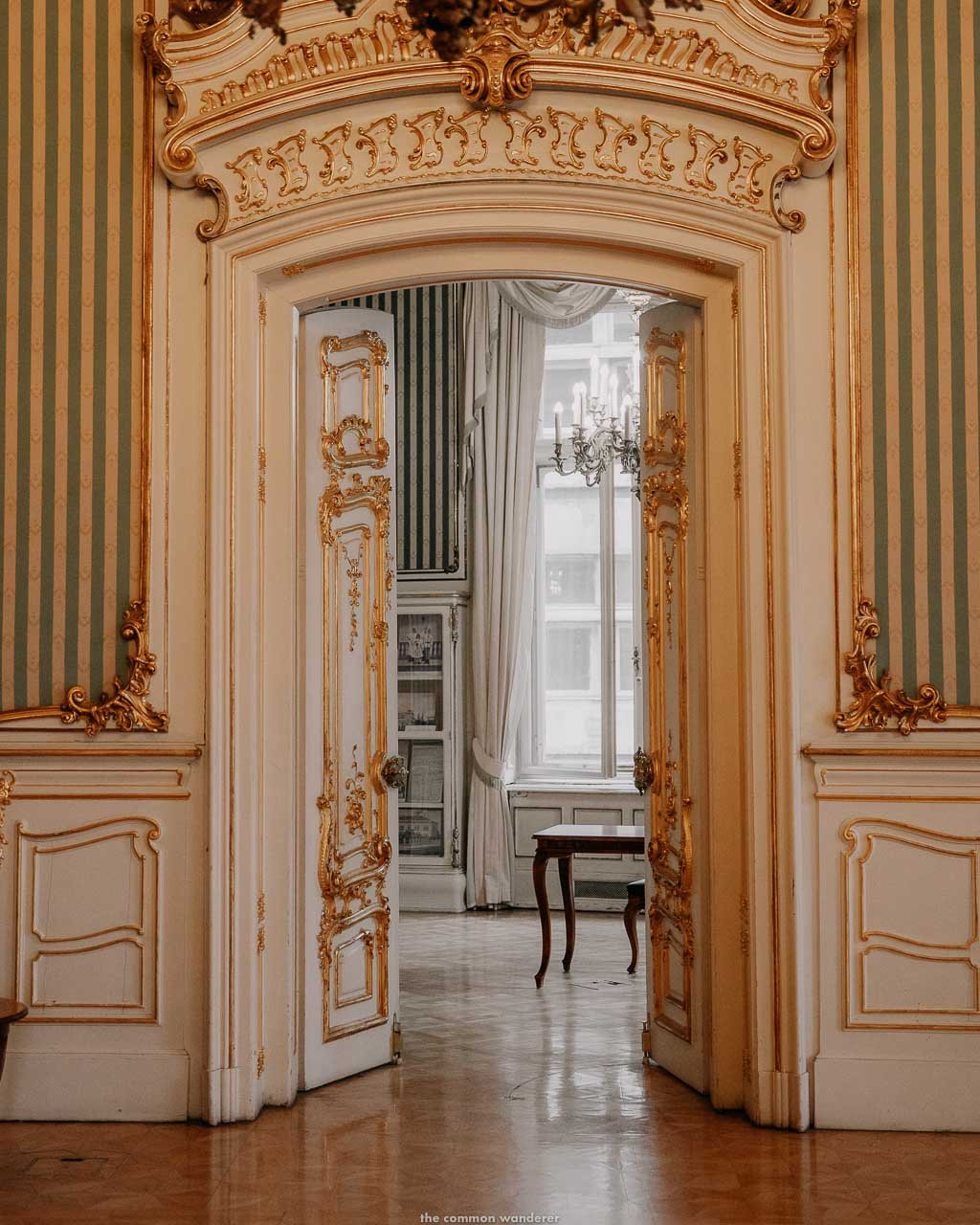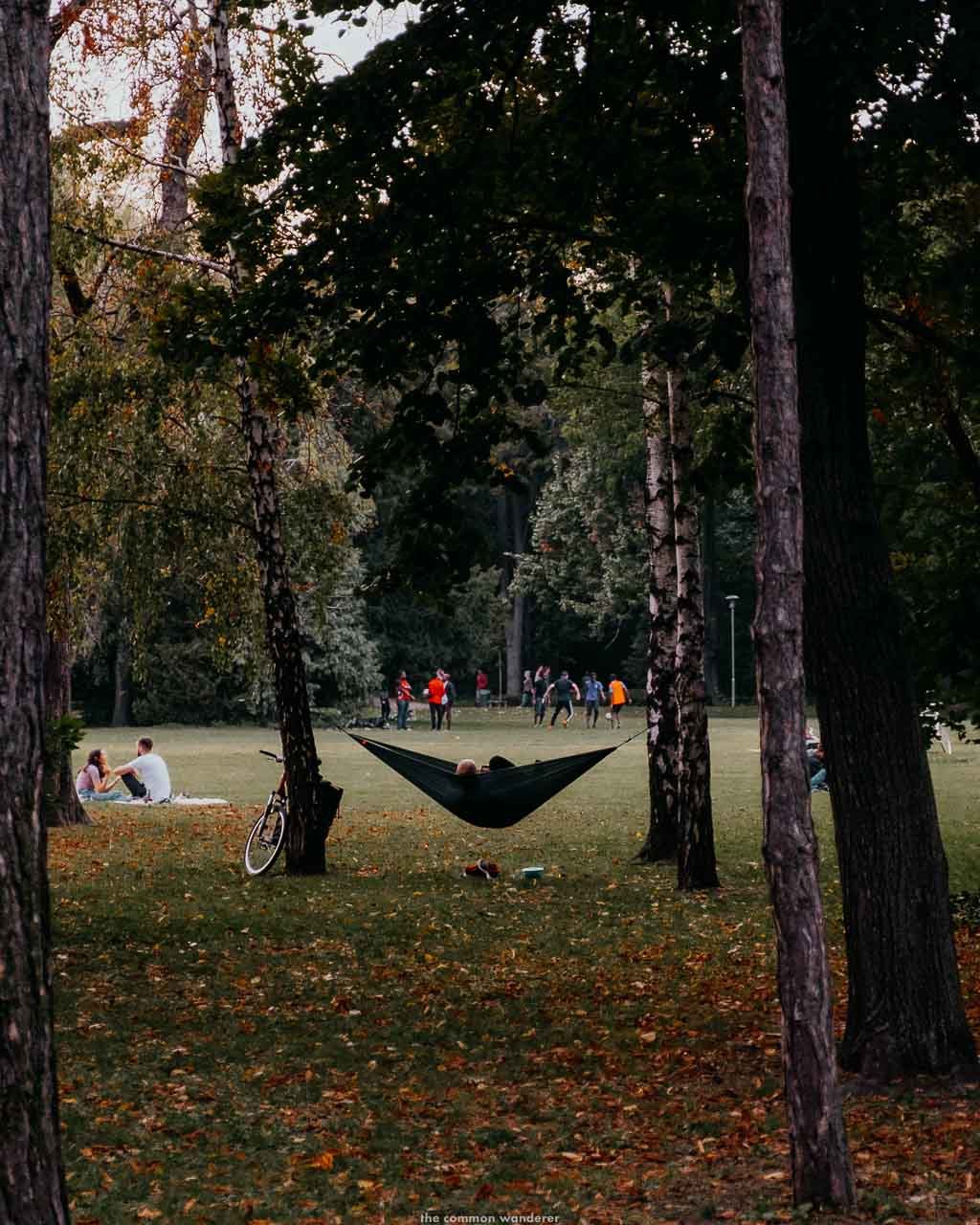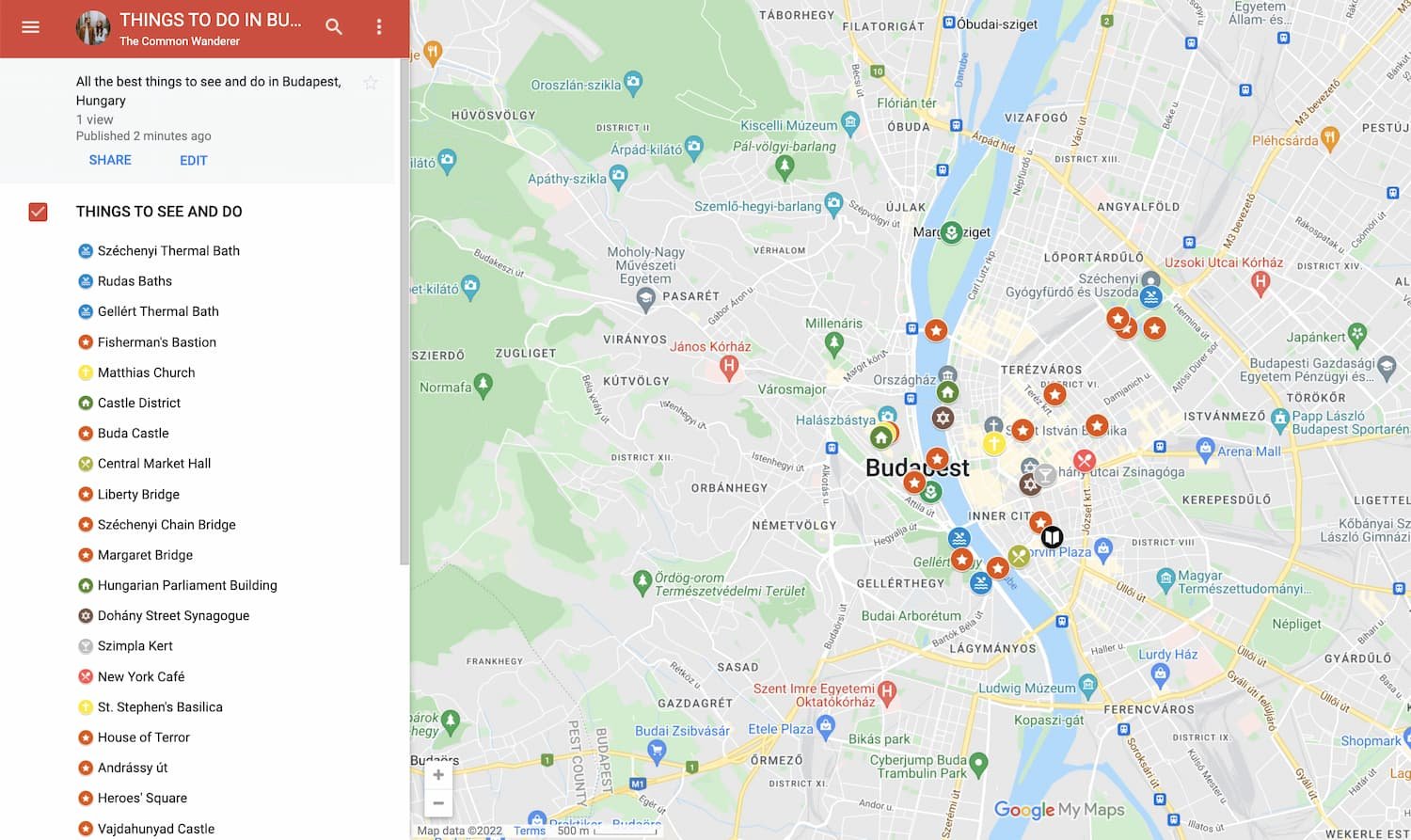The Best Things To Do in Budapest, Hungary's Majestic Capital
The essential things to do in Budapest during your stay in the Hungarian capital.
UPDATED - April 2024
Our love affair with Budapest started long ago, during Mark’s gap year visit in 2005. Back then, Budapest was gritty, grimy and slowly recovering from its Soviet occupation, but the famous beauty was there, faded somewhat, but hidden, waiting to shine once again.
Over the course of a week enjoying the city, Mark fell in love with the youthful exuberance of the city, noting in his journal “I could live here”. As fate would have it, in 2019 we made the move, setting up a home in Budapest’s thriving Jewish Quarter.
Now, Budapest, despite having been a resident of the city for over two years, might be our favourite city in Europe.
…
Budapest is a city of two - Buda and Pest, separated by the mighty Danube River, and first connected in the late 1800s by the elegant Chain Bridge. Repeatedly invaded over the centuries; by the Ottomans, Hapsburgs, Nazis and Communists, Budapest isn’t just beautiful, it’s resolute and rebellious.
In the last century alone, the city has been devastated and rebuilt three times - after the defeat in WW1, again after the Nazi and Soviet invasions of WW2, and in 1956 during the anti-Soviet revolution and ensuing siege.
It’s because of this past that Budapest feels more real - it might lack the fairytale charm of Prague or the endless beauty of Paris, but the city has a real depth for travellers to dive deep into. It’s also this past that makes Buda and Pest feel like two distinct cities in one - a rare treat for travellers.
It’s truly remarkable what this city has to offer for travellers. From historic thermal baths to quaint cobbled streets, and exceptional gastronomy to hip ruin bars, there’s an endless amount of things to do in Budapest for all types of travellers.
For us, there’s no greater city in Europe for things to see and do, whether it be over a weekend away or a long-term stay. This guide aims to showcase the very best things to do in Budapest, from two people who lived and breathed this wonderful city for over two years.
We hope you enjoy it as much as us, and as always, if you want further recommendations, reach out to us on Instagram!
LOVE OUR PHOTOS? Edit like us with our European Summers Preset Packs, and mobile video filters, inspired by the warm hues and vibes of summers spent in Europe
BUDAPEST TRAVEL GUIDE OVERVIEW
TOP THINGS TO SEE | Fisherman’s Bastion, Hungarian Parliament, Buda Castle, Chain Bridge, Jewish Quarter
WHAT TO EAT | Goulash, Paprikash, Lángos
WHERE TO STAY | 5th & 7th District
BEST TIME TO VISIT | September
CURRENCY| Hungarian Forint
HOW TO GET AROUND | Walk, e-scooter, bike, Budapest Metro
THE BUDAPEST CARD
Before we start, we think it’s important to know about and purchase the Budapest Card, the official city tourism pass.
It’s valid for 72 hours (perfect for a city break!) and gives you free public transport, plus free and/or discounted entry to the city’s main highlights, like most of the galleries and museums, for example.
We highly recommend buying the Budapest Card if you plan to do plenty of sightseeing while you’re in town — and you can also use the Budapest Card to get 20% off your entry ticket at the Széchenyi thermal baths. Winning!
THE BEST THINGS TO DO IN BUDAPEST
RELAX IN BUDAPEST’S EXQUISITE BATHS
Is there another city in the world with such an array of exceptional thermal baths? We think not.
Budapest sits atop one of the largest thermal basins in the world, a curious geographical phenomenon that allows 40,000m3 of delightful, mineral-rich water to spring to the surface every day.
The Romans were the first to harness the healing powers of the thermal waters before the Ottomans conquered Hungary and brought their hammam-style to the city.
The result is an exceptional mix of incredible thermal bathing houses, all with their own grandiose architecture and unique features. You probably won’t have time to visit them all, so below we’ve highlighted three of our favourites, located right in the heart of the city, for your bathing pleasure.
SZECHENYI BATHS
A visit to Szechenyi Baths is truly one of the best things to do in Budapest. In fact, it’s so great, you should plan to visit more than once, to really soak it all in (yes, that is a pun!).
The baths are one of Budapest’s most popular attractions, built-in 1913 over healing hot springs feeding 18 separate pools, 3 outdoor and 15 indoor, and a range of other wellness features including steam rooms and saunas, in the ornate complex.
Szechenyi Baths are separated into two distinct sections, with the beautiful outdoor area the most popular for visitors.
Here, there are three pools encased by the pastel yellow building, two heated immersion pools (one activity pool of 30 - 34 degrees, one thermal pool of 38 degrees), and the 50m swimming pool (26-28 degrees).
The interior pools, while less awe-inspiring than the outdoor pools, are no less enjoyable. In total, there are 15 indoor pools ranging from 18 degrees to 40 degrees, of which a few are just not worth visiting unless you’re a regular.
For more in-depth information, read our Szechenyi Baths guide.
THE DETAILS
Where | Állatkerti krt. 9-11
Opening Hours | Summer: Daily from 6 am - 10 pm (indoor pools close at 8 pm), Winter: Daily from 7 am to 7 pm
Cost | Weekday ticket with locker: HUF 5,900, Weekend ticket with locker: HUF 6,200 - 20% discount with the Budapest Card
Related | Our complete guide to visiting Szechenyi Baths
BOOK | Skip the line entry to Szechenyi Baths
GELLERT BATHS
In the thermal bath capital of Europe, there’s one place that lays claim to being the most beautiful of them all: Gellert Baths (read our complete guide here!).
An Art Nouveau architectural masterpiece brought to life early last century, there are stained glass roofs pouring golden light on the pools below, grand columns and elegant sweeping bathrooms detailed with turquoise Zsolnay mosaic tiles, and ornately-carved sculptures and ceramics dotted everywhere.
It’s a feast for the eyes as well as a balm for tired, aching souls, and certainly deserving of its own affectionate nickname: ‘Palace of Baths’.
Gellert also ranks as one of our favourite Budapest baths (yes, even above the more famous Szechenyi!) because it feels more local than some of its counterparts.
There is an array of 13 pools and thermal baths, both indoor and outdoor and ranging from 26c to 40c, plus saunas, steam rooms, and massage treatment rooms to keep you busy during your time here!
The Gellert Baths form part of the Gellert Hotel complex, on the Buda side of the river and right in front of the beautiful Szabadság (Liberty) Bridge.
Budapest is a super walkable city and you can easily get to the baths on foot. If you’re coming from the Pest side, simply cross Liberty Bridge and you’re already there.
As a visit to Gellert Baths is one of the best things to do in Budapest, we recommend arriving early (9 am) to enjoy the baths before the crowds arrive.
THE DETAILS
Where | Kelenhegyi út 4
Opening Hours | 9 am - 7 pm daily
Cost | HUF 10,900 - 20% discount with the Budapest Card
Related | A travellers guide to Gellert Baths
BOOK | Skip the line tickets to Gellért Baths
RUDAS BATHS
Located right on the banks of the Danube in the heart of Budapest is the best value for money Budapest thermal bath option, Rudas Baths.
Although not as visually beautiful as its city counterparts Szechenyi and Gellert, Rudas has a more authentic, local feel which makes it highly appealing.
Thermal bathing has existed on the site since the 16th century when the Ottomans built a small hammam complex. The ornate, domed Turkish Bath, remains the centrepiece of the complex, with its dark, steamy environs harking back to yesteryear.
The main octagonal pool and surrounding dip pools remain the best-kept secret amongst Budapest’s thermal baths.
Beyond the Turkish Baths, there are an array of therapy pools throughout the complex with temperatures ranging from 10 and 42 °C (50 and 108 °F), including the insta-famous rooftop dome pool, which is the perfect place to enjoy the sunset in the summer months.
There’s also a swimming pool in the centre of the complex if you’re looking to get some laps in.
There are a few curious entry restrictions to the Turkish bath, including men and women-only bathing days (see below), however co-ed bathing is allowed throughout the rest of the complex each day.
Rudas is located at the foot of Gellert Hill, just a short walk from Elizabeth Bridge, so if you’re staying in downtown Budapest, it’s only a short walk to visit.
THE DETAILS
Where | Döbrentei tér 9
Opening Hours | 6 am to 8 pm daily, Night bathing: 10 pm to 3 am, Fri and Sat, Turkish bath: Men only Mon, Wed - Fri (until 1 pm), Women only, Tues, Co-ed Fri from 1 pm, Sat - Sun
Cost | Weekdays: HUF 5,500, Weekends: HUF 6,900 - 20% discount with the Budapest Card
ADMIRE BUDAPEST FROM FISHERMAN’S BASTION
From Fisherman’s Bastion (Halászbástya) the most enchanting views of Budapest appear - overlooking the imposing Hungarian Parliament and endless expanse of the Danube; it’s here that you really fall in love with Budapest - in fact, after living in Budapest for over two years, it’s still our favourite view.
Built between 1895 and 1902 (although the original walls were built in the 1700s) in a Neo-Romanesque style by architect Frigyes Schulek, the bastion comprises seven stone towers, which symbolise the seven chieftains of Hungary.
The structure itself is fairytale-esque, with turrets, towers and parapets reminding of Hogwarts. The lower terrace is home to the grand stairs, which reach towards the upper bastions and Matthias Church. Both bastions and the inner corridors form the bastion courtyard and terraces, where the towering statue of St. Stephen’s appears.
The upper terrace is home to view platforms that provide uninterrupted views of the whole of Pest, as well as the seven stone towers.
The vistas from Fisherman’s Bastion are mesmerising, encompassing the four main bridges of Budapest, St. Stephen’s cathedral, Gellert Hill, Margaret Island, and the pretty urban landscape of Pest.
If you’re into photography (you should follow us on IG if you are!), it’s here that the most iconic photos of Budapest exists, photographed through the arches down to Parliament below, and sitting on the edge of the bastion, with Parliament behind.
Given Fisherman’s Bastion is one of the most popular places to visit in Budapest, it gets busy, very quickly. We suggest visiting for sunrise, when the crowds are thin (mostly just Instagrammers!), and the sunrise magical. Alternatively, in summer we suggest visiting in the late afternoon, as you’ll witness an incredible sunset over Pest. If you can avoid it, don’t visit during the day - it’s just too busy.
It’s also worth noting that touring outside the visiting hours (early morning, late evening) means entry to the upper Bastion is free.
THE DETAILS
Where | Budapest, Szentháromság tér
Opening Hours | Daily 9 am - 7 pm (can be accessed outside these hours)
Cost | HUF 1,000 pp (purchased at the cash machine)
Read | Our complete guide to Fisherman‘s Bastion
EXPLORE THE HISTORIC JEWISH QUARTER (7TH DISTRICT)
Once a dilapidated district riddled with pain and trauma from the atrocities of WW2, the Jewish Quarter of Budapest (Erzsébetváros) is now rapidly gentrifying, home to trendy cafes & restaurants, notorious ruin bars and parties, and incredible street art.
Home to Budapest’s Jewish community since the late 1700s, it was also on these very streets that the Jewish Ghetto was placed during WW2, and remnants of this time still exist, including the Synagogue triangle, parts of the ghetto wall, Holocaust memorials, Jewish restaurants and stores.
Because of its past, there’s a heap to see and do in the district (read our 7th District guide), so we highly recommend taking a walking tour of the district, which you can book here.
…
The starting point is Kiraly Utca, home to hostels, bars, eateries and the infamous Gozdu Udvar, a renovated passageway featuring clubs, bars, and mid-range restaurants offering Hungarian and western fare. it’s popular with tourists, but we recommend exploring further into the district to find the real treats!
On Akácfa utca you’ll find the uber-busy Mazel Tov (head to Dobruma instead... trust us), and the party capital of Budapest, Instant/Fogas, where the tunes play till the early hours.
Nearby Kazinczy Utca is home to Budapest’s most famous ruin bar, Szimpla Kert, and Karavan, a street-food courtyard with heaps of different fast food options.
For somewhere more relaxed, head to our favourite bar in Budapest, Köleves Kert, a garden cum bar that has vibes for days in summer. There’s also the Kazinczy Utca Synagogue, one of three in the district.
Hipsters flock to Madach Imre Ter, a square filled with uber-cool bars, cafe’s and shops where Budapest’s creative youth often meet. Telep and Központ are the coolest bars here and don’t forget to grab incredible Neapolitan-style pizza at Moto. Close by is Rumbach Synagogue, the second of the glorious Jewish places of worship.
Back towards Wesselenyi Utca is the Great Synagogue (see above), Europe’s largest and most beautiful. Further up the street is Arán Bakery, maybe the best in Budapest and perfect for a quick snack on the go.
The district is also home to many of the best brunches in Budapest, including Cirkusz, Dorado (also great for coffee), Stika, Vinyl & Wood.
The 7th District can get a little (read very!) touristy, so if you’re after somewhere more local where the local hipsters and students frequent, head across to the stunning 8th District. It’s probably our favourite district in Budapest, home to some of our favourite cafe’s, bars, and buildings.
THE DETAILS
Where | Budapest Jewish Quarter
Plan | Our guide the Budapest’s Jewish Quarter, The best brunch in Budapest, Our guide to Budapest’s Hipster 8th District, How to visit Dohany St Synagogue
BOOK | A guided walking tour of the Jewish District
THE GREAT SYNAGOGUE OF BUDAPEST
The centre point of Jewish culture and indeed modern Jewish history in Hungary is the Dohany Street Synagogue (the Great Synagogue - book your guided tour here).
Inaugurated in 1859, Dohany Street Synagogue is the largest in Europe, and the second-largest in the world and is located right in the heart of the bustling Jewish Quarter. Its size, however, does not detract from its beauty - it’s quite simply one of the most beautiful structures in all of Budapest.
Featuring a breathtaking array of ornate architectural details, elegant brickwork and magnificent stained glass windows, the synagogue is a feast for your eyes (and camera). The outstanding domed towers hint at the building’s Moorish/Oriental design inspirations and are the most emblematic part of the building.
…
The interior is mysterious, combining Moorish elements, including, the splendid organ, impressive Torah ark, gilded detailing and colourful geometrical paintings.
However, while the architecture is stunning, it’s the building’s (and Budapest’s) past that is most intriguing. An important sight for Jewish public life since its inauguration, the Synagogue and surrounding district were at the heart of brutal WW2 atrocities.
Hungary joined the Axis in late 1940 in exchange for returned lands lost in the Treaty of Trianon, yet by 1943 the country was keen to side with the Allies, all too aware of the brutal Nazi Germany atrocities. In March 1944, Germany invaded Hungary, and the Nazi’s, aided by the Hungarian Fascists, began to deport Jews and Gypsies to the death camps of Auschwitz.
The synagogue serves as both a memorial to the lives (and families) lost in Budapest and beyond, and as a beacon of solidarity and hope.
As such, we recommend joining a guided tour of the complex and visiting the various memorials that exist throughout the site, including the Raoul Wallenberg Memorial Park, the Tree of Life sculpture, and the Martyrs' Cemetery.
THE DETAILS
Where | Budapest, Dohány u. 2
Opening Hours | Sun - Thurs 10:00 - 16:00, Friday 10:00 - 14:00, Saturday closed
Cost | HUF 5,000, Get a 10% discount with the Budapest Card here
Plan | How to visit Dohany St Synagogue
BOOK | A guided tour of the Great Synagogue
VISIT SZIMPLA KERT, AND EMBRACE BUDAPEST’S RUIN BAR CULTURE
Ruin Bars have brought travellers to Budapest for close to 20 years now, and a drink or 10 at the famous Szimpla Kert is one of the best things to do in Budapest.
But what is a ruin bar exactly?
After World War 2 and the cold war years, many buildings in the old Jewish Quarter of Budapest were left to rack and ruin. In the early noughties, a number of enterprising individuals began to transform these dilapidated buildings and courtyards into the perfect character-filled underground bars and pubs, or 'romkocsma' - earning them the title of ruin bars/pubs.
From the outside they could easily be confused with your average run-down building, inside they’re anything but average, with Szimpla Kert, being the original, and best, ruin bar in Budapest.
…
The first thing you’ll notice when you step inside the glass doors of Szimpla Kert is darkness. It’s slightly disarming, no matter what time of day it is; as if you’ve stepped into another world.
It kind of feels like if the Lost Boys from Peter Pan were to create a bar, this would be the result.
Then you’ll notice the eclectic furniture - the art, the colourful neon lights, the disco balls, the 90’s tv’s, the plants hanging from the ceiling. You can even sip a beer in an old Trabant (Soviet car).
There are a range of themed bars within Szimpla Kert, ranging from beer, wine and shisha, and the booze is cheap (ish), making it the perfect starting point for a night out in Budapest.
One of our favourite things about Szimpla Kert is the awesome Sunday farmer market.
Producers from all over descend to sell their wares - mostly locally grown fruit, vegetables and flowers, bread, spreads and cheese (omg the goat’s cheese is to die for), honey etc., as well as some Hungarian street food stalls.
If you’re a traveller, we totally recommend buying some bread, local cheeses, and some Hungarian spreads, heading to one of Budapest’s amazing parks (or along the Danube), and having a chilled picnic.
Quite simply, you can’t visit Budapest without a drink here - and if you wish to enjoy more Budapest ruin bars, read our guide to the city’s best ruin bars.
THE DETAILS
Where | Budapest, Kazinczy u. 14
Opening Hours | Mon - Fri: 3pm - 4am, Sat: 11am - 4am, Sun: 9am - 4am, Sunday Farmers Market: 9 am - 2 pm.
Cost | Free
Related | Our complete guide to Szimpla Kert
WALK BUDAPEST’S HISTORIC BRIDGES
Unsurprisingly for a city that straddles one of Europe’s largest rivers, the Danube, Budapest is home to a number of wonderful, historic, and photogenic bridges.
Beyond their functionality, these bridges represent so much more to the city. Here are three of our faves:
SZECHENYI BRIDGE (CHAIN BRIDGE)
When we think of Budapest, it’s of Chain Bridge at dusk, flanked by twinkling lights, with Buda Castle looming behind. It’s simply gorgeous, and the emblem of beautiful Budapest.
Commissioned by Istvan Szechenyi to connect Buda with Pest over the mighty Danube, Szechenyi Bridge was built by Scot Adam Clark and opened in 1849 to great fanfare. It has since become a symbol for the city, surviving multiple world wars and political uprisings, to allow locals and tourists alike to switch between the two sides of the city.
Beyond its beauty, it’s the perfect place for tourists to get photos of some of Budapest’s iconic sites, including Parliament, Gresham Palace, and Buda Castle.
NOTE | Szechenyi Bridge is currently closed for renovations, with plans to reopen in 2023.
SZABADSÁG BRIDGE (LIBERTY BRIDGE)
Featuring ornate art nouveau design, Liberty Bridge (otherwise known as Szabadság híd) might just be our favourite bridge in all of Budapest.
Connecting Buda and Pest in the southern end of the city, Liberty Bridge was built in 1896, adding another bridge crossing to the ever-expanding Budapest. With views over Gellert Hill, the famous Gellert Baths, and the incredible Corvinus University of Budapest, it’s another key location to get some amazing photos of the city.
In summer, join the locals and sit on the centre part of the bridge to watch the sunset.
MARGIT BRIDGE (MARGARET BRIDGE)
Margaret Bridge is a little less iconic than Chain Bridge and Liberty Bridge, but no less beautiful.
Located at the northern end of the city, it’s the second oldest bridge in the city, completed between 1872 and 1876. It connects Buda and Pest, however, it also incorporates Margaret Island, the beautiful city island situated in the middle of the Danube.
The views back towards Parliament make it a perfect photography location.
Book | The guided city tour takes in many of Budapest’s famous bridges
CLIMB TO THE TOP OF ST. STEPHENS BASILICA
Paris has Notre Dame. Florence has the Duomo. London has St. Paul’s Cathedral. And Budapest has St. Stephen’s Basilica. Regardless of your religious persuasion, a trip to the city wouldn’t be complete without a visit to this neo-classical masterpiece.
The largest church in Budapest, the 19th century St. Stephen’s Basilica (Szent István Bazilika) is revered by Hungarian Catholics - it contains the mummified right hand of the king St. Stephen, the founder of modern-day Hungary. Due to this, the church is understandably extravagant, with the grandiose interior, featuring detailed frescoes and gilded accents notable.
As you walk in, you’ll feel the power of the structure - it feels somewhat cavernous and dark, yet awe-inspiring at the same time. When the sun shines through the stained glass windows, the interior details light up in spectacular fashion. To the right main altar is St. Stephen’s mummified hand - to view it you must make a ‘donation’ for a light to illuminate the hand (kinda tacky in our opinion...).
…
The best reason, however, to visit St. Stephen’s is for the panoramic dome, which provides almost 360-degree views of downtown Budapest. Particularly beautiful at sunset, the viewpoint offers sweeping views across notable Budapest attractions such as Castle Hill, Parliament, Basilica Square and downtown.
Curiously, the dome of St. Stephen’s is equal in height to the Hungarian Parliament building at 96m, symbolising the importance of spiritual and worldly thinking, so you’ll feel on top of Budapest.
This is one best thing to do in Budapest, so we recommend buying tickets in advance, especially in summer. Alternatively, take this wonderful St Stephen’s guided tour, which includes the rooftop viewing platform!
It’s also worth noting that on St Stephen’s Day (Hungary’s national holiday on August 20), the mummified hand of St Stephen is brought out of a side-chapel and paraded around the building.
THE DETAILS
Where | Budapest, Szent István tér 1
Opening Hours | Monday to Friday 09:00 - 17:00, Saturday 09:00 - 13:00 and Sunday 13:00 - 17:00
Cost | Free, a donation of HUF 200 is suggested/forced - 20% discount with the Budapest Card
Plan | Our complete guide to visiting St Stephen’s Basilica
BOOK | St Stephen’s Basilica guided tour and rooftop view
UNDERSTAND BUDAPEST’S COMPLICATED HISTORY AT THE TERROR HOUSE
If these walls could talk, the stories they’d tell...
Budapest has a complicated past, and post-war sat in the middle of Soviet-led communism and the Western-led democracy.
The House of Terror Museum is located on the aristocratic Andrássy Avenue, in the former headquarters of the Fascist Arrow Cross Party (sharers of Nazi ideology), before becoming the headquarters of the State Protection Authority (Soviet secret police), the AVH from 1945 to 1956.
The museum was created to retrace the history of the fascist and communist movements during pre and post-war Hungary, and also acts as a memorial to the victims of these regimes. Most Hungarians were opposed to the restrictive communist regime and therefore were policed strictly.
Politicians or dissidents who didn’t align with the communist values were interrogated and often brutally tortured in this very building. Walking through the museum is simultaneously riveting and chilling - each exhibition is multi-sensory, with photo and video footage juxtaposed with chilling Soviet-style music.
The most harrowing part of the museum is the basement, where you can witness examples of the holding cells where prisoners were tortured.
It’s worth noting that the museum has received some criticism, mostly for purported revisionist history. And admittedly, it does feel a little in that way throughout the exhibition, especially for those with an in-depth knowledge of Hungarian history. However, we still feel it’s an important museum to visit, especially to understand Budapest’s, and indeed Hungary’s recent history.
The museum is mostly in Hungarian, so we recommend booking this guided tour to get the full context of the museum
THE DETAILS
Where | Budapest, Andrássy út 60
Opening Hours | Tues - Sun: 10 am - 6 pm
Cost | HUF 3,000 - available for purchase from museum ticket office only
Note | You can’t take photos or videos in the museum
ADMIRE, THEN TOUR HUNGARY’S STUNNING PARLIAMENT
Rising from the banks of the Danube stands Hungary’s striking and outrageously beautiful Parliament. One of the most impressive buildings in the country, if not the world, this Gothic Revival and Neo-Renaissance masterpiece is an essential must-see on any Budapest sightseeing tour.
Construction started on this masterpiece in the late 1800s and was completed in 1904, the creation of architect Imre Steindl who unfortunately did not live to see the job, and his finest work finished.
What stands now is a beautiful behemoth - it covers an area of 18,000 square meters, has 691 rooms, 28 entrances, 10 courtyards and 29 staircases. The exterior reminds, in part, of the Notre Dame in Paris, with suggestive Gothic features. Witnessing the exterior, whether from Kossuth Lajos Square, Bem rakpart, or across the river at Batthyány Square, is awe-inspiring.
Inside, the pièce de résistance is the Grand Stairway - complete with eight granite columns, intricate frescoes, and dazzling stained-glass windows, which leads to the Dome Hall, showcasing The Hungarian Holy Crown and the Coronation Insignia, and statues of Hungarian rulers on golden pedestals under canopies of gold. It’s often hard to consider this is still a working house of Parliament, such is the grandeur.
We recommend taking a 1-hour guided tour to understand all that this building means to not just Budapest, but all of Hungary. However, if you’re on a budget, just take a stroll around the exterior to enjoy its magnificence.
Attracting close to 700,000 visitors per year, it’s one of Budapest’s best things to do, so we recommend booking your ticket well in advance.
THE DETAILS
Where | Budapest, Kossuth Lajos tér 1-3
Opening Hours | Mon - Fri: 8 am - 6 pm, Sat-Sun: 8 am - 4 pm
Cost | Guided tours start at HUF 5,400 (€16) per person
VISIT THE HARROWING SHOES ON THE DANUBE MEMORIAL
The World War 2 years were not kind to Hungary’s Jewish community, and the Shoes on the Danube memorial pays respect to those lost during this time.
In late 1940, Hungary joined the Axis in exchange for returned lands lost in the Treaty of Trianon. However, after realising the atrocities occurring at the hand of the Nazi’s, the country was keen to side with the Allies by late 1943. In March 1944, Germany invaded Hungary, and replaced Miklos Horthy with the fascist, anti-semitic Ferenc Szalasi, establishing the Nazi-aligned Arrow Cross Party.
This was the beginning of the end of many Hungarian Jews, as they were systematically rounded up and deported to the death camps around Europe, notably Auschwitz. However, some remained and were brutally tortured and killed on the banks of the Danube River, before being washed away by the rushing waters.
Many of the victims were forced to remove their shoes before their execution (shoes were a valuable commodity during the war), and the Shoes on the Danube memorial pays tribute to the lives lost during this horrific time in history.
…
The simple memorial shows 60 pairs of mid-century shoes, made from iron, true to size and detail, lining the banks of the river near Parliament. They symbolise that no one, regardless of their standing, age or gender, was spared.
Cast-iron signs pay tribute to the victims with the inscription “To the memory of the victims shot into the Danube by Arrow Cross militiamen in 1944-45.”
A visit here is an essential thing to do in Budapest, as harrowing as it might be. It’s a serene, yet constant reminder that in war times, no one really wins.
THE DETAILS
MARVEL AT THE INTRICATE MATTHIAS CHURCH
Located in the heart of beautiful Buda, behind Fisherman’s Bastion, is the intricate Matthias Church (Mátyás Church), the oldest and arguably finest, church in Budapest.
Built in 1015 in Romanesque style, the church in its current, florid-Gothic style was constructed in the late 1300s, undergoing extensive renovations in the late 19th century.
A fine example of Gothic architecture, the exterior demands attention with its colourful roof tiles, gargoyles, spires and large, geometric windows.
Stepping inside the church the first thing you’ll notice is the exuberant interior, with extravagant details, intricate frescoes, colourful stained glass windows, gold-leaf motifs, and stunning altars. The use of colour and pattern is unlike any other church we’ve seen in Europe.
The interior also reveals the church’s long history - the lower half is characteristic of the Romanesque style, while the upper half is unashamedly Gothic. It was within these walls that two Kings of Hungary were crowned.
Tickets can be purchased online (or free with the Budapest Card), or at the small stand opposite the church. If you want a super unique experience at the church, book this classical music concert within the church
We recommend arriving first thing in the morning (9 AM), so you have the opportunity to explore the church without other tourists.
THE DETAILS
Where | Budapest, Szentháromság tér 2
Opening Hours | Mon – Fri: 9 am to 5 pm, Sat: 9 am - 12 pm, Sun: 1 pm - 5 pm
Cost | HUF 1,800 - Free admission with the Budapest Card
Book | Classical music night in Mattias Church
EXPLORE BUDA CASTLE & SURROUNDS
Set atop a hill overlooking Pest and beyond, Buda Castle has stood here, in one shape or another, since the 13th century. Providing a glimpse into Hungary’s rich cultural history, a walk among the cobblestone paths, through the palace, quarters and gardens, is a must-do in Budapest.
We suggest joining this Buda Castle evening walking tour to learn more about its complicated history and hidden secrets.
Starting from Clark Adam Square at the foot of Castle Hill, make your way up to the castle, either by the ever-popular Buda Castle Funicular or via the numerous pathways and roads ascending the hill. We recommend walking, as there are numerous viewpoints which are worth stopping at for incredible views of Budapest.
The main building houses the Hungarian National Gallery (more on that below) and the Budapest History Museum, showcasing art from top Hungarian artists and sculpturists. Inside the Hunyadi Court lies the ornate Kang Matthias fountain, the imposing Oroszlános archway into the Lions Courtyard, and the newly restored neo-Renaissance Guardhouse and Royal Riding Hall.
Here are a few more of our favourite places in and around Buda Castle:
Varket Bazaar | Stunning restored Neo-Renaissance gardens built by Hungary’s most celebrated architect, Miklós Ybl. Look best in Autumn
Matthias Waterfall | Elaborate fountain dedicated to the country’s king Matthias - Hungary’s answer to the Trevi Fountain
Sándor Palace | Watch the Changing of the Guards ceremony – during the daytime, every hour in front of the Accidently Wes Anderson-esque Sándor Palace
Virgin Mary Statue | For the best sweeping views back towards Chain Bridge and Parliament
Although most of the castle district is currently undergoing significant renovations and historical updates after years of war and neglect, it’s still an essential place to visit in Budapest.
THE DETAILS
Where | Budapest, Szent György tér 2
Cost | Free, entrance to the Hungarian National Gallery and Castle Museum are free with a Budapest Card
WANDER THE PRETTY CASTLE DISTRICT
Beyond Buda Castle, Fisherman’s Bastion, and Matthias Church, we believe the medieval charm, cobblestoned streets, and pastel facades of the Castle District are one of Budapest’s best-kept secrets.
Settled in the 13th century when King Béla IV built the castle, the area has undergone huge changes ever since. Its strategic position overlooking the Danube has meant constant invasions and battles over the centuries, as countries sought to rule Hungary.
Predominantly rebuilt in the 17th-century post-Ottoman rule, most of Budapest’s oldest and most beautiful buildings appear on these quiet streets.
The area around Disz Ter where we suggest you explore, the winding roads and laneways all the way to Becsi Kapu Ter. Our favourite streets include Uri, Táncsics Mihály, Fortuna and Országház.
For an exceptional coffee (and pastry) fix, stop by at 4 Minutes, easily the best cafe in the district.
WATCH SUNSET (OR SUNRISE) FROM GELLERT HILL
Want to reallllly fall in love with Budapest? Grab some beers and walk to the peak of Gellert Hill for sunset, then watch as the sky shifts slowly from orange to purple over the entire skyline of Budapest, before the flicker of city lights begin. It’s a mesmerising display showcasing the effortless beauty of this remarkable city.
At its tallest, Gellert Hill towers 235m above the city, providing a 270-degree panorama from Castle Hill to Ferencvaros. From the summit viewpoint, underneath the indomitable Liberty Statue, it’s possible to see the city’s famous architectural marvels, including Parliament, Budapest Castle, St. Stephens Cathedral, Chain Bridge, Liberty Bridge, and the winding Danube river.
While we wholeheartedly agree that sunset is the best time to visit Gellert Hill, it’s great to visit at any time of day. There is a range of hiking paths over the mountain, providing differing vantage points over the city - our favourite is the secret path that cuts along the mid-point of the hill, parallel to the Danube, providing uninterrupted views over Pest.
If you’re visiting in early Spring, you may want to visit for sunrise, when the famous cherry blossoms are in blown, providing a super-unique (and popular) view over Liberty Bridge.
It’s worth noting Gellert Hill is currently undergoing a huge restoration project, which will return the area to its former glory. In the meantime, it’s still possible to access various viewpoints, including the Citadella viewpoint overlooking Chain Bridge towards Parliament.
THE DETAILS
Where | Gellert Hill
ENJOY COFFEE AND CAKE AT NEW YORK CAFE
Words cannot adequately describe New York Cafe, one Budapest’s most famous attractions. Built-in neo-renaissance style, with marble columns, sparkling chandeliers and stunning frescoes, the cafe literally takes your breath away.
Similar to Vienna, Budapest is known for its grand cafe culture, and New York Cafe has been welcoming visitors for over 125 years, initially as a meeting place for the local bourgeoisie, as well as writers and poets keen to sell their skills to the highest bidder.
Now, it’s filled with tourists keen to enjoy coffee and cake in this beautiful, old-world setting.
Beyond the beauty, there is live Gypsy music from 11 am, which provides a certain ambience that is unmatched anywhere else in Budapest.
We recommend the selection of cakes, including the caramel Dobos torte (NOM!), traditional layered chocolate, and a decadent hot chocolate for which the New York Cafe is famous. Sure, you’ll likely have a sugar crash an hour later, but it’s 100% worth it.
Alternatively, there’s a full buffet brunch selection (at €30, you’ll want to eat everything!), which includes a selection of pastries, bread, fruits, plus coffee, tea, herbal teas, hot chocolate, and freshly squeezed orange juice, and a selection of one warm dish from the breakfast menu, such as poached eggs, eggs benedict, and even American-style pancakes.
Visting the New York Cafe is a once in a lifetime experience (read our guide here), so we highly recommend splashing the cash and soaking up the atmosphere of this extravagant cafe. Be warned though - it gets outrageously busy, so remember to book in advance to secure yourself a seat.
If you’re unlucky enough to not get a seat, don’t fret - there are a number of other exceptional coffee houses throughout Budapest, including the grand Café Gerbeaud, the charming Café Zsivágó, and the ever-popular Muvész Coffee House.
THE DETAILS
Where | 1073 Budapest, Erzsébet ut. 9-11.
Opening hours | Monday – Sunday: 8 am – 12 am, Breakfast from 8 am – 11 am
Tips | Book in advance here
Read | Our complete guide to visiting New York Cafe
FIND DELICIOUS TREATS AT BUDAPEST’S GREAT MARKET HALL
If you’ve followed our travels over the years, you’ll know we have a thing with markets. To us, they’re the easiest and best way to understand a country and culture - and it’s no different at Budapest’s incredible Great Market Hall.
The oldest and largest indoor market in Hungary, the Great Market Hall was built in 1897 to service the needs of an ever-growing city.
The Great Market Hall is set across two floors. The lower hall is where the stalls and vendors sell their wares - think fruit and veg, meat, fish, bread, and an array of stores selling Hungary’s finest exports, such as paprika, Tokaji wine, salami and spirits. It’s colourful, bustling and essential to explore.
On the upper level, things are a little different. Various tourist-themed stores selling Hungarian textiles, handicrafts and souvenirs make it somewhat unappealing. There are, however, some great (if not a little overpriced) Hungarian street food restaurants, selling classics such as langoś, pörkölt, and goulash.
There are some little stands in which to eat your food, however, it does get busy during summer, so grab your food and head to the banks of the Danube.
It’s worth noting that the market is feeling a little drab these days - maybe it’s because of the pandemic, or that more innovative market halls have popped up in places such as Florence and Paris, but it’s still an essential thing to do in Budapest.
If you’re after a more cultural experience, head to some of the smaller market halls dotted throughout the city. They’re a little more authentic and wayyyy cheaper.
These include:
Rákóczi Market
Klauzal Ter
Hunyadi Square Market
Hold Street Market
THE DETAILS
Where | Budapest, Vámház krt. 1-3
Opening Hours | Mon: 6 am - 5 pm, Tues to Fri: 6 am - 6 pm, Sat: 6 am - 3 pm, Sunday closed
Cost | Free
SAMPLE SOME TYPICALLY HUNGARIAN FOOD AND DRINK
With some many things to do in Budapest, you’re going to get super hungry - trust us, we’ve been there.
Fortunately, Hungary is home to a world-famous cuisine that mixes western, eastern and even middle-eastern elements to create exceptional, hearty fare that will leave you wanting more. If you want to sample all the delicious Hungarian delicacies, Hungarian cuisine guided tour is essential to join!
If you’re a meat-eater, you’re in luck - most of Hungary’s main dishes include some form of meat, including:
Goulash soup | a hearty, paprika-laced meat stew
Pörkölt (goulash) | The national dish, beef cooked in a thick paprika sauce, served with noodles
Chicken Paprikash | Chicken cooked with thick cream + paprika sauce
Kolbász | Cured pork sausage
Stuffed cabbage | Stuffed meat in cabbage leaves
Cholent | Slow-cooked beans and pearl barley topped with goose leg
Vegetarian dishes include:
Lecsó | A type of Hungarian ratatouille
Mushroom Paprikash | Mushrooms cooked with thick cream + paprika sauce
Lángos | Deep fried dough served with sour cream and cheese
Sweet dishes include:
Cottage cheese dumplings | Cottage cheese (túró) served inside deep-fried dumplings
Palacsinta | Hungarian pancakes served sweet or sour
Kürtőskalács | Chimney cakes served with cinnamon
Strudel | Sweet and savoury inside a layered pastry
So, where should you go to eat delicious Hungarian food? Good question.
We recommend the following restaurants for traditional Hungarian cuisine:
Or, join this Hungarian Cuisine tour and find all the hidden local spots
WALK ALONG THE TREE-LINED ANDRASSY AVENUE
Evoking the grand boulevards of Paris is the impressive tree-lined Andrassy Avenue, which connects downtown Budapest with Heroes Square and City Park.
Constructed in the late 1800s as a home to Budapest’s elite, the UNESCO World Heritage-listed Andrassy is home to many of Budapest’s most beautiful buildings, restaurants and historic cafes, theatres, luxury boutiques and museums.
The best way to take in the avenue is to walk it, and a steady stroll from one end to the other should take around 30 mins.
On the way, make sure to check out the following buildings and squares;
Hungarian State Opera House
Kodály körönd
Oktogon
Drescher Palace (under construction)
We recommend walking Andrassy Avenue if you plan on visiting Heroes Square, Szechenyi Baths, or the Museum of Fine Arts.
THE DETAILS
Where | Andrassy Utca, Budapest
HEROES SQUARE, VADJAHUNYAD CASTLE & CITY PARK (VAROSLIGET)
At the top end of Andrassy Avenue lies Heroes Square, an expansive square built to commemorate the 1000th anniversary of the Magyar conquest. At the centre of the square lies the Millenium Monument, featuring the seven chieftains of the Magyars, and an impressive column, atop which the archangel Gabriel holds the Hungarian Holy Crown.
Behind are two colonnades showcasing Hungary’s most important historical figures. The square has played host to many of Hungary’s most important historical occasions, including the reburial of Imre Nagy, the revered leader of the Hungarian Revolution of 1956 who was executed by the Soviets.
On either side of the square lies two wonderful museums, the Museum of Fine Arts, and the Kunsthalle - both are worth a visit if you have time.
Beyond Heroes Square is the romantic Vadjahunyad Castle, an architectural delight modelled after castles in Transylvania. Each corner of this neo-Baroque masterpiece is filled with turrets, gates, ivy-covered walls and bright flowers. It’s like stepping back in time and is a place where childhood dreams come alive.
Beyond the Castle is the leafy City Park, one of Budapest’s largest green spaces. It’s currently undergoing extensive regeneration, including two new museums, such as the Hungarian House of Music, and the expansive Ethnographic Museum.
Our favourite part of the park, though, is the Millenium House - a former belle epoque exhibition hall restored to its former glory, with colourful Zsolnay ceramic decorations adorning the facades of the building. The gardens are also stunning, especially in summer when the rose garden is in bloom.
There’s also an upmarket restaurant and coffee house serving modern Hungarian cuisine.
TAKE A SUNSET RIVER CRUISE
As the link between eastern and western Europe, the Danube has played an important part in Budapest’s history, so it’s only natural to take to its waters and see the famous UNESCO World Heritage-listed urban landscapes of Budapest from the water with a river cruise.
Now, normally we’d never recommend a sightseeing cruise - they’re just not our thing, and often have the potential of being super-touristy. But a cruise along the Danube is one we suggest you get on board (pun intended!).
A river cruise gives you a whole new perspective on the city, taking in all the major sites such as the impossibly grand Parliament, Budapest Castle, Gellert Hill, each grandiose bridge, Margaret Island, as well as the famed promenades.
There’s really nothing like it, and not doing a river cruise would be doing a disserve to your time in Budapest.
As we’ve mentioned previously in this Budapest guide, sunset is one of the best times in the city, so we recommend booking this river cruise for sunset. You’ll watch as the city is bathed in a golden glow, before slowly turning all shades of the rainbow as night settles on this marvellous city.
THE DETAILS
Book | This Budapest sunset sightseeing cruise with cocktail
CHECK OUT BUDAPEST’S BEST MUSEUMS
Budapest is home to a surprising amount of exceptional museums, and over the course of 2+ years we made an effort to discover all of them, so if you’re an art or history buff, a museum visit is one of the best things to do in Budapest.
Below are a few of our favourites.
Note that entry to Budapest’s museums is free with the Budapest Card.
HUNGARIAN NATIONAL MUSEUM
By far the most informative is the Hungarian National Museum, set in an attractive neo-classical building on Budapest’s Múzeum boulevard, the Hungarian National Museum is a must-visit for anyone looking to learn more about Hungary and Budapest’s long and interesting history.
The interior, especially the colourful and detailed stairways toward the second level and the central rotunda modelled after the Pantheon in Rome are definitely the most beautiful parts of the building, and worth a few snaps.
The exterior houses beautiful gardens which are the perfect place to sit in the sun during the warm summer months.
THE DETAILS
Where | Múzeum ucta, 14-16, Budapest
Opening hours | 10am - 6pm Tue - Sun
Cost | Entry is HUF 1600 per person - free with the Budapest Card
MUSEUM OF FINE ARTS
A neoclassical masterpiece located off Heroes Square, the Museum of Fine arts houses international and local collections, as well as permanent collections of ancient Egyptian art, classical antiques, old sculptures, old master paintings, modern art and graphics.
Similar to the National Museum, the interior is stunning, including the ornate and expertly renovated Romanesque Hall (seriously, come just for this), and the grand Renaissance hall.
THE DETAILS
Where | Budapest, Dózsa György út 41
Opening hours | 10am - 6pm Tue - Sun
Cost | Entry is HUF 3,400 per person - free with the Budapest Card
HUNGARIAN NATIONAL GALLERY
Located in Buda Castle, the Hungarian National Gallery showcases Hungary’s most impressive fine art, covering all genres ranging from historical to contemporary.
We weren’t expecting much when we visited - the interior is quite dated and less grand than other city museums, however, the art on show, especially in 19th & 20th-century exhibitions, blew us away. In many ways, we actually preferred the art on show here to many galleries we visited in Italy (sacrilegious, we know).
It’s also possible to climb the Castle Dome, which provides expansive views over Budapest.
THE DETAILS
Where | Budapest, Szent György tér 2
Opening hours | 10am - 6pm Tue - Sun
Cost | Entry is HUF 3,400 per person - free with the Budapest Card
ADMIRE THE ORNATE ERVIN SZABÓ LIBRARY
Budapest is full of undiscovered gems; all you’ve gotta do is deviate slightly off the well-worn tourist path to find them. The opulent Ervin Szabó Library, located in the leafy southern end of the 8th District (incidentally our fave Budapest district), is one such gem.
Built in the late 1800s by a Hungarian aristocrat, Count Frigyes Wenckheim, Wenckheim Palace was one of the more stately homes in Budapest’s Palace district.
It was purchased by the city and converted into the Ervin Szabó Public Library in the early 1930s, and now allows visitors and users a sneak peek into the historical opulence of the city. Amongst the throng of (lucky) students deep in revision, the gilded roofs and magnificently carved wood panels of the old reading rooms and ballrooms are absolutely breathtaking.
Just remember that this is a working library, so keep the noise down or arrive early.
To visit Wenckheim Palace, you’ll need to buy an entrance ticket in the foyer (1,000 HUF/person), then make your way to level 4, before following the signs to the ballroom and reading room.
It’s worth noting that the rest of the library is just that, so beyond the palace, there’s not a lot to see and do, unless you’re keen to get your work/study on!
THE DETAILS
Where | Szabó Ervin tér 1
Opening hours | Mon - Fri 10am - 8pm, Sat 10am - 4pm
Cost | HUF 1,000
Read | Our guide to Budapest’s Hip 8th District
RIDE EUROPE’S OLDEST METRO
Cute, quirky, historic, functional - there are many ways to describe Europe’s oldest metro line, Budapest’s M1.
Built underneath the historic Andrassy Avenue for the Millenium celebrations in 1896, the line has been in constant operation since, servicing downtown Budapest with City Park (and just beyond).
The trams are cute, however, the historic stations such as Opera and Kodály körönd feel like a time capsule, with wooden support beams and ornate tiling lining the walls.
A ride on the M1 metro isn’t an essential thing to do in Budapest, but it sure is fun, and gets you to Szechenyi Baths quickly! Tickets cost HUF 350 and can be bought from most stations.
THE DETAILS
Cost | HUF 350 - free with the Budapest Card
RIDE THE NO.2 TRAM
At this point, we should probably address the fact we’ve included two forms of transport as ‘things to do in Budapest’... but hear us out.
You see, the #2 tram route might be one of the most beautiful in the world.
Running from Jaszai Mari Ter near Margaret Bridge, all the way down to Közvágóhíd, the tram passes significant Budapest attractions such as Parliament, Vigado Concert Hall, and the National Theatre, while also providing the most incredible panorama across the Danube of Castle Hill, Fisherman’s Bastion, Gellert Hill, Chain and Liberty Bridge, and the vast Danube.
We recommend taking the tram during dusk when the city is bathed in a golden glow, and then returning as the lights of the city start to twinkle as night falls.
A ride on the #2 tram really is the cheapest and most enjoyable way of taking in the city sights without breaking the bank on a tacky bus tour.
What’s more, if you visit Budapest in the lead up to Christmas, the tram will be adorned with Christmas lights.
THE DETAILS
Cost | HUF 350 - free with the Budapest Card
WALK AROUND THE PRETTY MARGARET ISLAND
Budapest’s answer to Central Park, Margaret Island is the perfect escape from the sometimes overbearing Budapest downtown, especially in summer.
Connected to the mainland by the beautiful Margaret Bridge, the teardrop-shaped 225-acre island is home to vast green spaces, which in summer become home to picnics and parties.
There is a range of bars along the Danube serving food and alcohol, that provide a somewhat Mediterranean feel to landlocked Budapest.
Beyond the fun times, there is actually a lot to see on the Island, including the Platinus thermal baths (including outdoor pools for summer!), the 13th century remains of the Dominican Convent, the historic Art Nouveau water tower, which has panoramic views of Budapest, the ever-popular musical fountain, and a Japanese Garden.
The island itself is super easy to get to; either catch the 4-6 tram or walk down the embankment from Parliament.
THE DETAILS
Where | Margaret Island
TAKE A DAY TRIP TO CUTE SZENTENDRE
If you’re planning to stay in Budapest beyond the customary weekend away (you should!), then you might want to consider booking a day trip to picturesque Szentendre, one of Hungary’s hidden gems (well, hidden to those outside of Hungary!).
Located about 45 mins from Budapest, Szentendre has a very Mediterranean feel to it - think cobblestone laneways, pastel-coloured Baroque buildings, historic churches, miles of (river) coastline, and a wonderfully laidback atmosphere. Known for its artist community, there is a range of wonderful galleries, museums and design studios dotted throughout the town.
We recommend exploring the town on foot, starting in the main square, Fó, and working your way through the myriad of cobbled laneways. Make sure you take the short walk up to Temple Square, located next to Saint John the Baptist's Parish Church for sweeping views over the terracotta rooftops and to the Danube.
For food, we recommend the quaint Teddy Beer restaurant, Centrum for delicious ice cream, or Álomlángos for perhaps the best lángos in Hungary.
We recommend booking a day trip to Szentendre to see the best of the town.
Alternatively, to get to Szentendre via public transport, head to Batthyány Square metro station and take the HÉV suburban rail. You’ll need to grab a Budapest public transport ticket (HUF 350), and an extension ticket to ‘Békásmegyer-Szentendre’ (HUF 350) from the ticket machines at the station.
THE DETAILS
Where | Szentendre
Cost | Train tickets: HUF 700
Book | A day trip tp Szentendre
BUDAPEST THINGS TO DO | A MAP
To make life easier for you guys, we’ve created a map with all the best things to do in Budapest listed.
To save this map to Google Maps app on your phone, click on the bracket in the upper right corner and save away.
PLAN YOUR TRIP TO BUDAPEST + FAQS
OUR BUDAPEST POCKET GUIDE
Our Budapest City Guide is a curated travel guide, designed to be downloaded to your phone and used as your trusty companion when exploring the city.
In this comprehensive guide, you’ll find our personal recommendations on the best things to see, eat and drink, places to stay, and things to know, gathered over the two years we spent living in Budapest.
BUY NOW | Our Budapest City Guide
WHERE TO STAY IN BUDAPEST
We’ve provided our top recommendations on where to stay in Budapest to suit each budget in this blog post - it’s pretty in-depth as is your best point of call for all things Budapest accommodation.
Alternatively, search and book your perfect accommodation here.
WHEN IS THE BEST TIME TO VISIT BUDAPEST?
Having now lived in Budapest for almost a year, we can safely say the shoulder seasons of May/June and September/October, are the best times to visit the city.
There are a few reasons for this;
#1 Budapest can get reallllllly busy during the peak summer months, so we recommend coming pre/post the peak season!
#2 The weather in the middle of summer can be a little stifling, so spring/autumn is much more comfortable
#3 It’s certainly cheaper to visit the city outside peak periods
#4 Did we mention the crowds in Summer?
WHAT’S THE CURRENCY IN BUDAPEST
Hungary’s an EU member state, so you’d be forgiven for assuming that they use the Euro as their currency.
Unfortunately, this isn’t the case - Hungary continues to use the Hungarian Forint, so you’ll need to keep this in mind when you visit.
For reference, 100 Hungarian Forints is generally equal to about £0.25, or €0.30 - you can check the most up-to-date exchange rate here.
CASH OR CARD IN BUDAPEST?
After spending 6 weeks living in Vienna, we got very used to always carrying cash - it’s like that city only works in notes and coins! So after moving to Budapest, we expected much the same.
Fortunately, you are able to use your card/Apple Pay and almost every single store, restaurant, bar etc. To save on fees, always select to pay in Hungarian Forint on the machine, as this will save you unnecessary exchange fees.
If you need to get cash out, we suggest only doing this at recognised banks, including OTP, K & H, Erste, Budapest Bank, MKB, Raffheisen etc. These banks don’t charge absurd withdrawal fees or poor exchange rates, designed to thieve from unsuspecting tourists, unlike the ever-popular EuroNet machines you’ll see all around the city.
Quite simply, never, ever use a EuroNet machine in Europe - they’re a scam.
HOW TO GET AROUND BUDAPEST
A lot of the best places to visit in Budapest are located within a short distance from each other in the expansive, and outrageously beautiful inner-city districts - therefore we highly recommend walking while visiting the city.
Alternatively, if you’re short on time, or looking to explore as much of the city as possible, we recommend purchasing a Budapest Card, which provides access to the city’s public transport, discounts on top attractions (including the thermal baths) and free access to 19 of the city’s best museums.
Depending on the length of your stay, the card is available for between 1-5 days. It’s super easy and useful!
Alternatively, there are a heap of e-scooter options, such as Lime and Bird, which are located throughout the city, as well as Bike Sharing from Mol Bubi.
Finally, the city has an extensive and efficient public transport network, which services all of Budapest’s attractions. Tickets are cheap (HUF 350 per ride, HUF 3,000 for 10 ticket packs - or free with the Budapest Card), so we suggest buying a pack of 10 tickets when you arrive, and then using them when needed.
BOOK | Get free public transport with the Budapest Card
HOW TO GET FROM BUDAPEST AIRPORT TO THE CITY CENTRE
When we first arrived in Budapest, we feared it’d be another one of those cities where the only way to get into town was via an expensive taxi or multiple buses.
How wrong we were.
It’s super easy to get from Budapest Airport to the city centre, and we’ve written a guide all about it which you can read here.
The easiest and most affordable option is the 100E, which services Budapest Airport with the city centre (3 separate stops at Kalvin Square, Astoria, and Deak Ferenc Square), and return.
It takes about 45 mins and costs HUF 900 (£2.50, €2.90 - tickets purchased outside Airport, or at Deak Ferenc Square) - a super affordable option for any traveller.
READ | How to get from Budapest Airport to the city center
TRAVEL INSURANCE FOR BUDAPEST
If you can't afford travel insurance, you really can't afford to travel. As the current global situation has taught many people, things can go wrong anywhere in the world - and insurance is often the only way of mitigating any issues with minimal expense or stress for you.
Here are our recommendations, based on 8+ years of full-time travel:
FOR TRAVELLERS | HeyMondo - COVID-19 coverage, comprehensive travel + medical insurance, an app with 24-hour medical support, and no out-of-pocket fees.
*Readers of The Common Wanderer get 5% off your policy by booking through our link here.
FOR DIGITAL NOMADS | SafetyWing - COVID-19 coverage, comprehensive travel & medical, and policies can be purchased while already abroad.
CAR INSURANCE | Insurance4CarHire - a great annual car insurance policy
PLANNING A TRIP TO BUDAPEST SOON?
BUDAPEST TRAVEL GUIDES | Explore the best of Budapest’s Jewish Quarter, Józsefváros, Budapest’s hipster 8th district, the best brunch in Budapest, and Where to stay in Budapest,
BUDAPEST ATTRACTIONS | A guide to Szechenyi Baths, the majestic Fisherman’s Bastion, Gellert Thermal Baths, New York Cafe, Szimpla Kert Ruin Bar, How to visit Dohany St Synagogue, A guide to St. Stephen’s Cathedral
BALATON BLISS | What to see and do on Lake Balaton, and our 3-day guide Balaton
EXPLORE MISKOLC | Enjoy our short city break guide to Miskolc, explore the enchanting forest town of Lillafüred, or discover the Miskolctapolca Cave Baths
AIRBNB GUIDE | Our essential guide to getting the best out of Airbnb
PHOTOGRAPHY | Love our photography? Wondering what gear we use to get all of our photos around the world? Click here to view our detailed photography gear guide, as well as our top travel photography tips!
RESPONSIBLE TRAVEL | Responsible travel is important. REALLY IMPORTANT. Learn our top responsible travel tips to help you, your family and friends travel more consciously around the globe
ECO-FRIENDLY PACKING ESSENTIALS | Don’t leave home without our favourite eco-friendly travel essentials
EXPLORE THE BEST OF BUDAPEST WITH OUR GUIDES
Some of the links on this Things to do in Budapest guide are affiliate links.
If you choose to purchase using these links, we receive a small commission at no extra cost to you. Please know that by using these affiliate links, you're directly supporting The Common Wanderer to stay wandering, the running costs of the site, and our ability to provide you with free content to help you on your travels.
That, and you're officially a legend.

